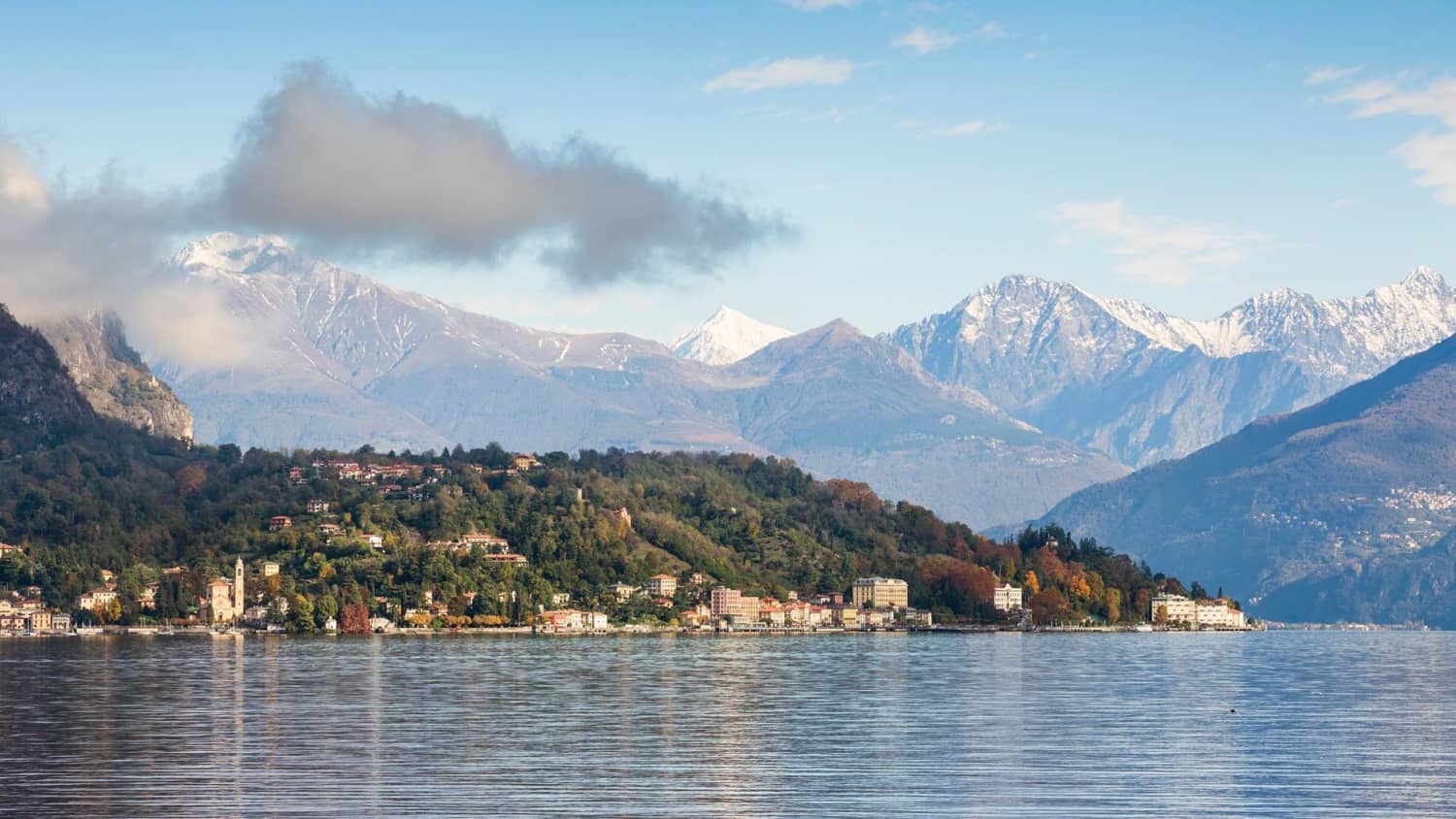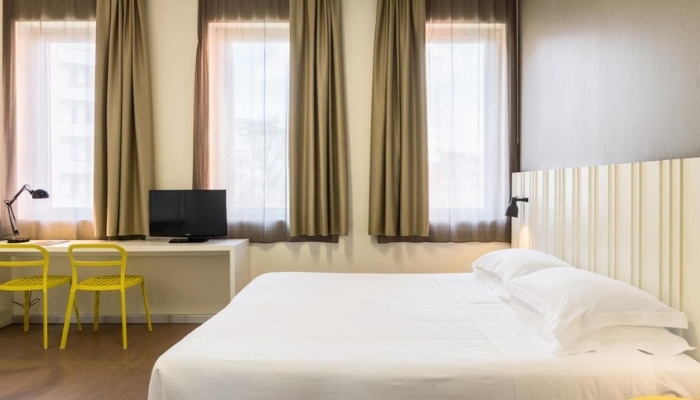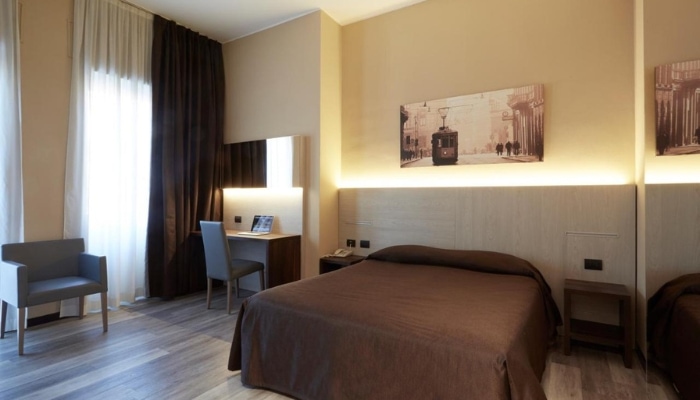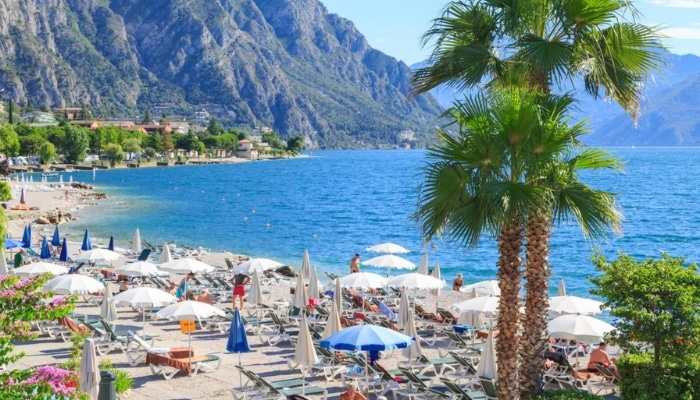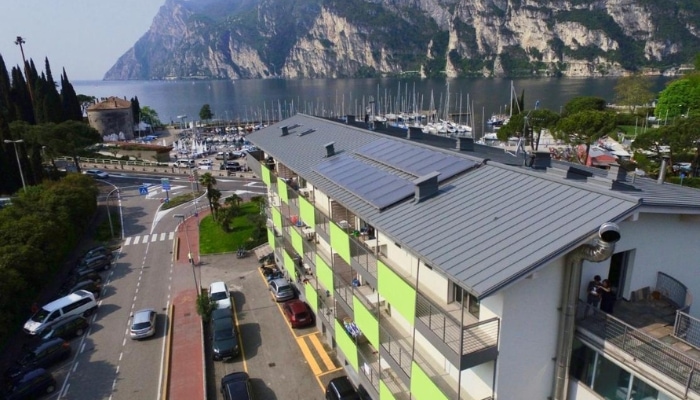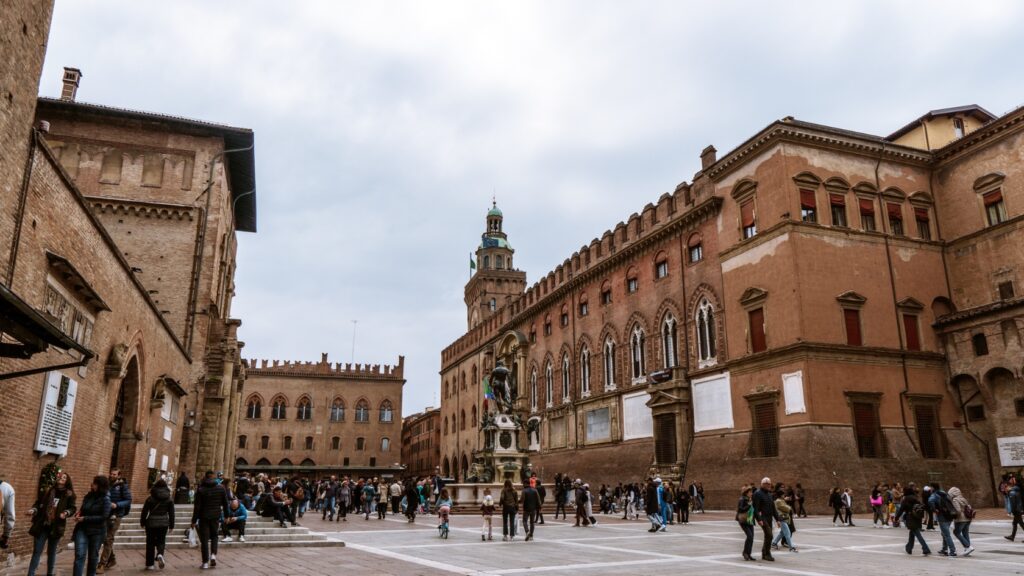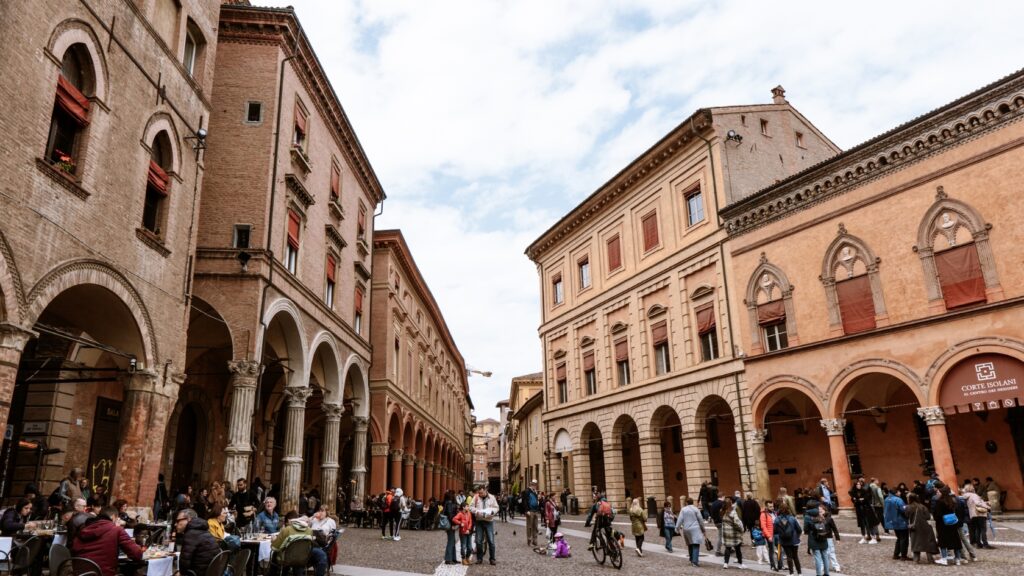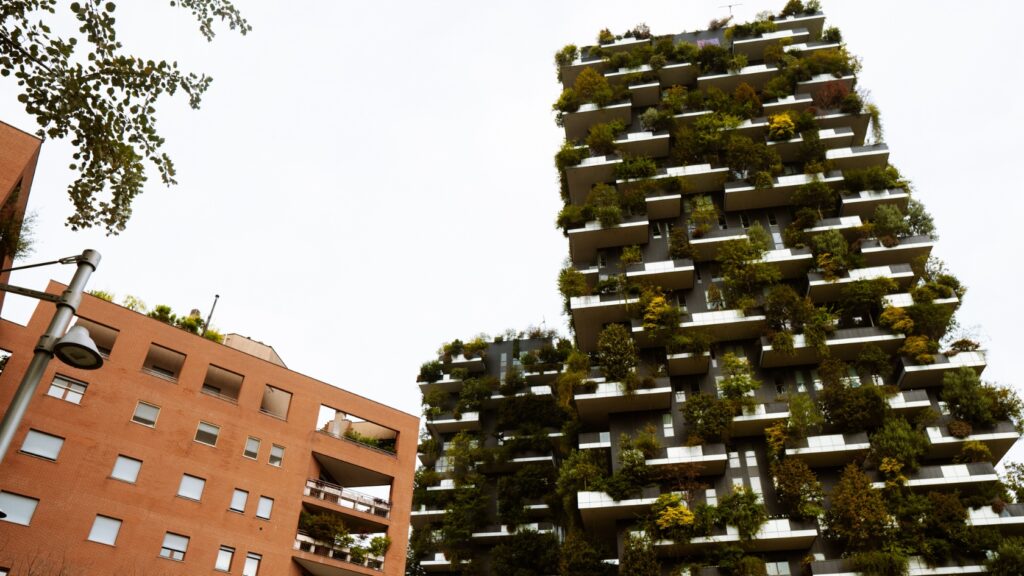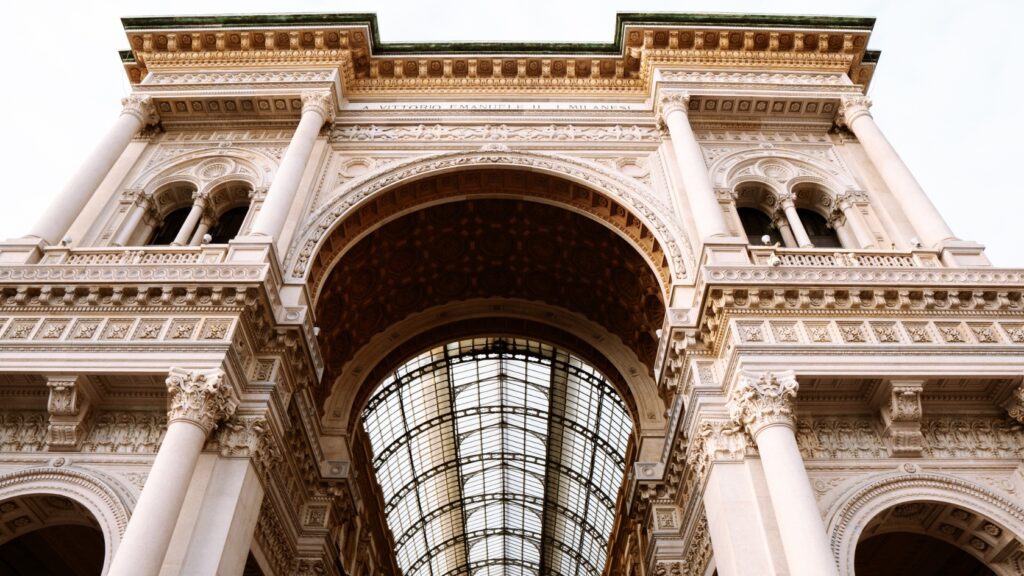Lombardy is a beautiful piece of Italy in the north of the country, which stretches around Mila In this guide to Lombardy, we take a look at our picks for the most beautiful cities and best things to do in Lombardy, Italy.
Lombardy
For most people, Lombardy is not the area of Italy they first think of when they think of Italy. This will probably be Rome, Tuscany, Venice or the Dolomites.
Nevertheless, Lombardy is exceptional and worth seeing. It is our heartthrob and I believe you will love it too.
Interesting facts about Lombardy
Where else can you swim in a warm Alpine lake, admire one of the most beautiful cathedrals in the world, visit beautiful historic towns, enjoy delicious food (the cuisine is one of the best!) with even better wine or visit the first UNESCO World Heritage Site in Italy (yes, even before Rome).
Lombardy is the ideal place for all nature lovers. Mountain scenery, alpine meadows, Lombard lakes and thousands of kilometres of hiking trails to guide you through this splendour.
It is one of the most populated and developed areas located in northern Italy. Thanks to this, cities have more to offer than just beautiful sights.
In Lombardy, your taste buds will rejoice. Don’t look for light cuisine full of basil and tomatoes.
On the contrary. The local cuisine is hearty and hearty, to give you strength for the local hills and warm you up for the colder weather. The cuisine here is one of the best in Italy and today we will show you, among other things, what food to try in Lombardy.
Lombardy has no sea. But it has the Po River, which is the largest river in Italy. This will amply compensate for the lack of coastline in the area.
As well as the Lombard lakes, where you can swim and enjoy the snow-capped peaks.
Read about other things to do in Italy.
Things to do in Lombardy – map
HOW TO USE THIS MAP: Above you will find a detailed map of Lombardy with tips on sights and interesting places to visit. Click at the top left of the map to see separate layers with highlighted locations. You can hide and show the different layers or click on the icons on the map to see the names of the places mentioned in the Lombardy guide. If you want to save the map, star it. For a larger version, click on the icon in the upper right corner.
Best things to do in Lombardy, Italy: THE MOST BEAUTIFUL CITIES
Milan – the centre of Lombardy
Milan is a fashionable and lively city that is the centre of Lombardy. You can feel the strong Swiss influence here, which, unlike in Rome, means you can count on the bus arriving at the right time :).
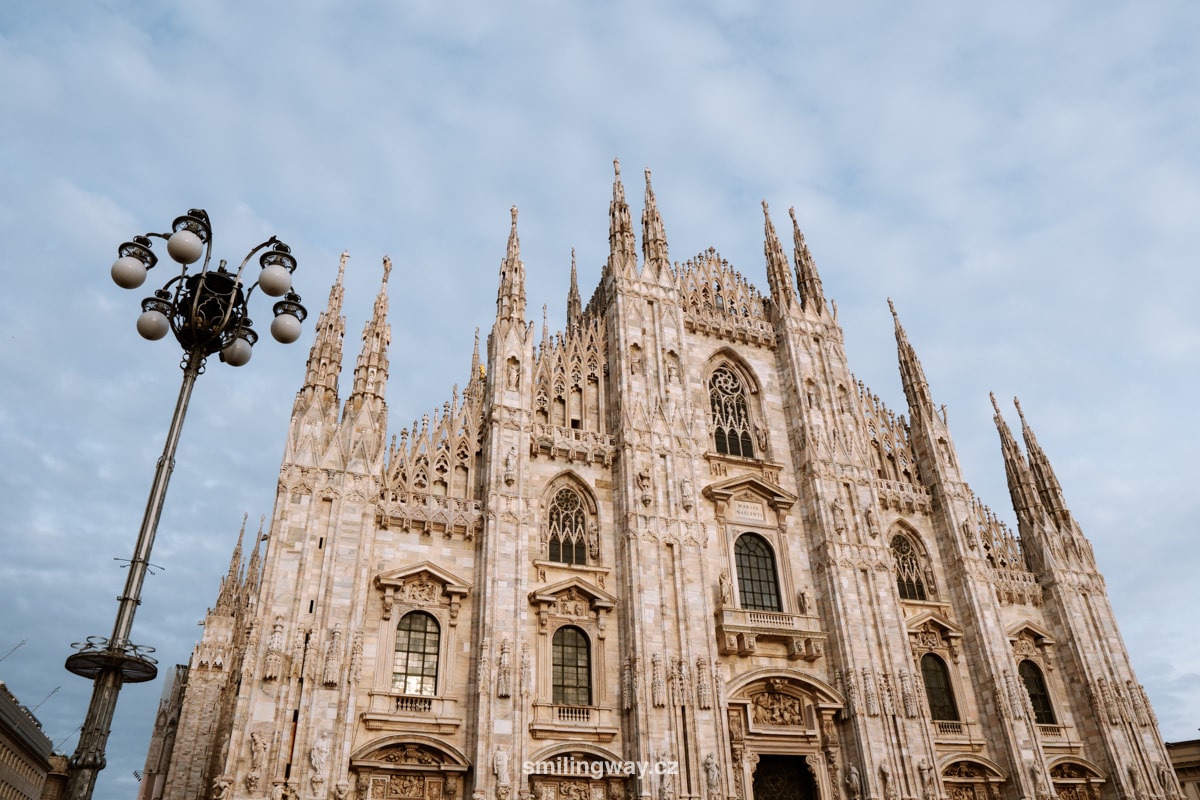
The iconic Duomo Cathedral and the Piazza del Duomo, which wraps around the cathedral, are not to be missed on your visit.
During your visit to the cathedral, you can climb to the roof. And it’s not just any roof. It’s probably the nicest roof you’ll ever walk on. Among the magnificent towers and with a view of Milan.
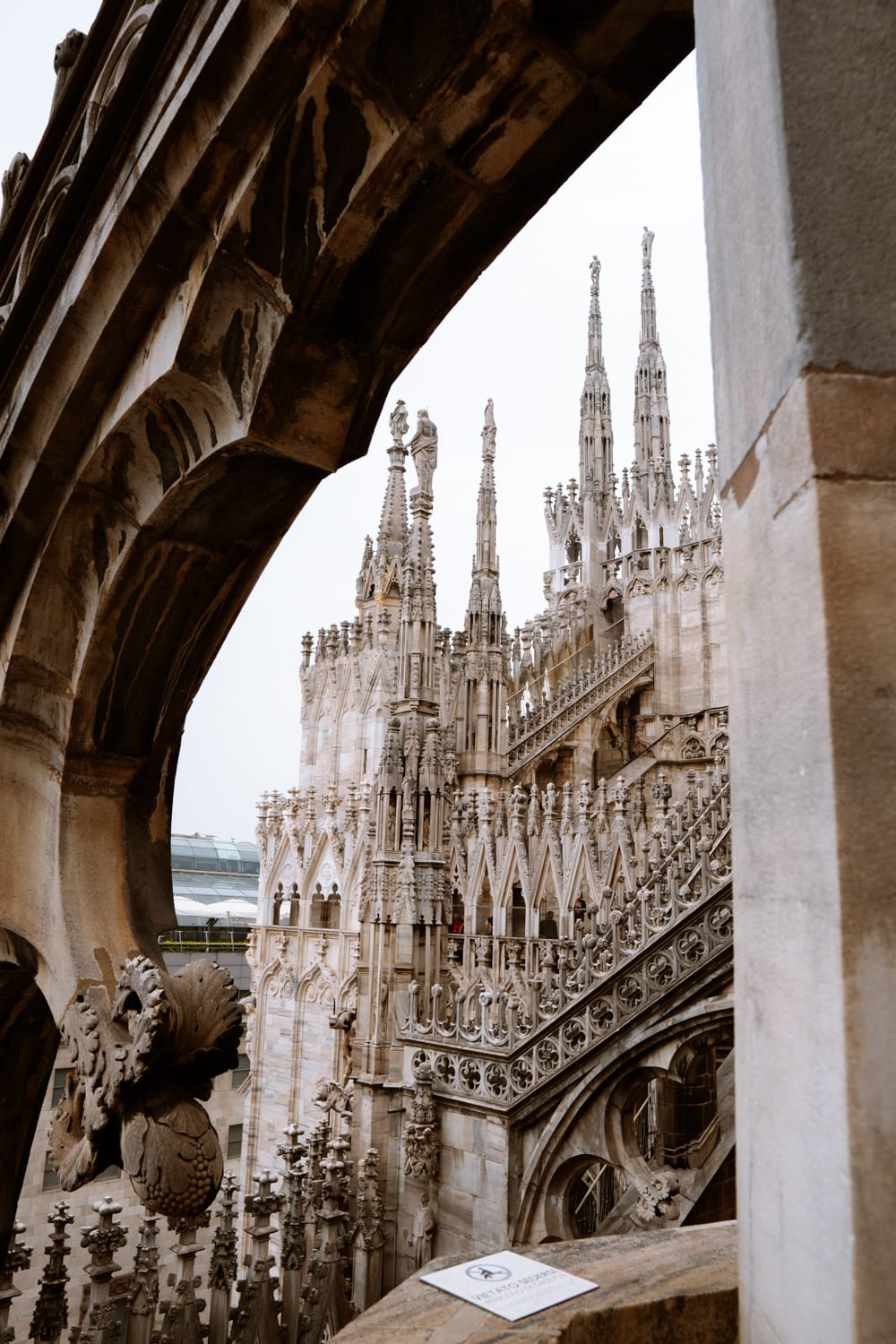
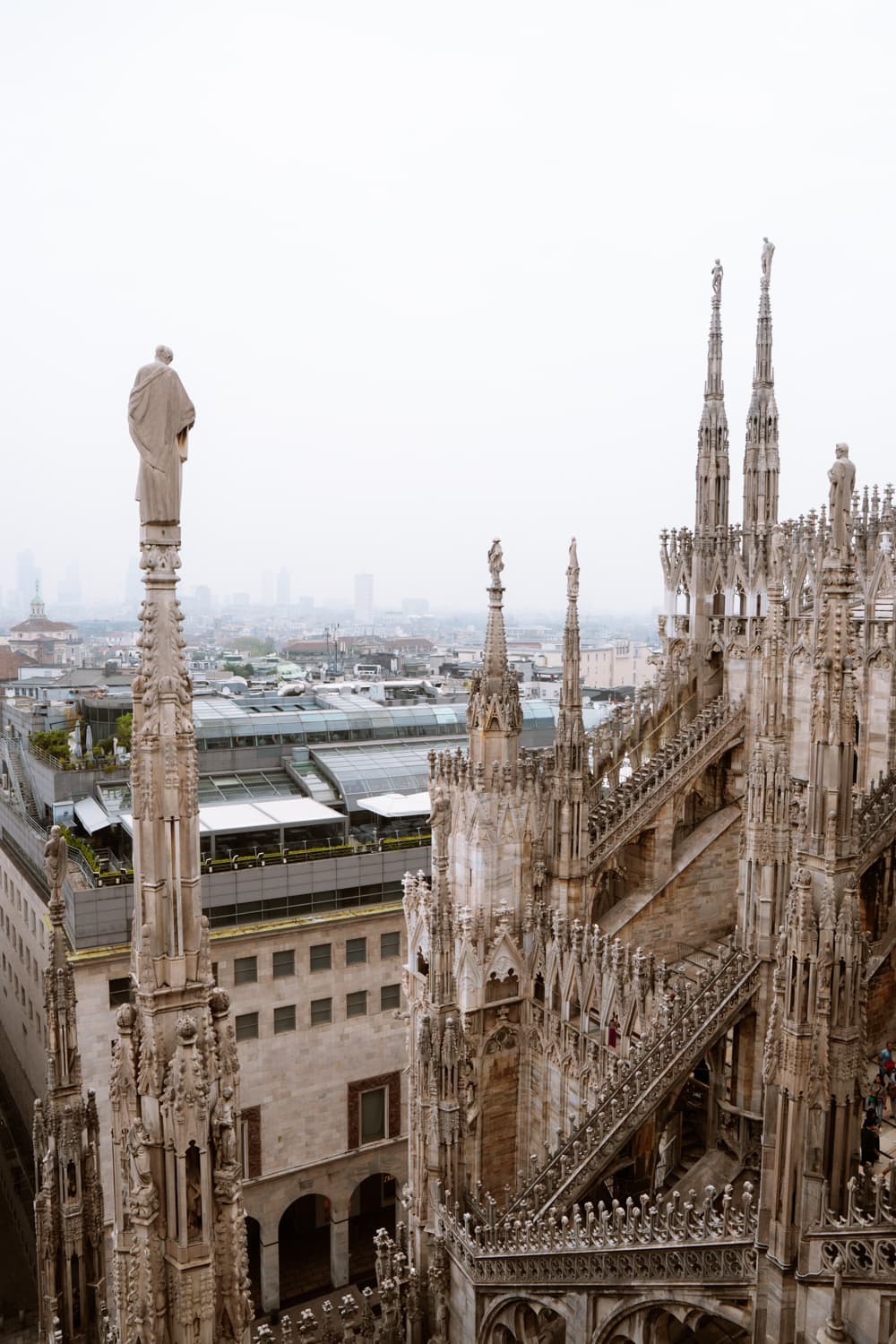
This is one of the best experiences Milan has to offer. And it’s worth every euro. That’s why there are queues all year round.
Booking tickets in advance is a must.
After visiting the cathedral, head next door to the Vittorio Emanuele II Gallery, the oldest shopping gallery still operating in Italy.

Next to the Church of Santa Maria delle Grazie is one of the world’s greatest works of art, Leonardo da Vinci’s The Last Supper. Soak up even more art in the museums of Sforza Castle, one of the largest citadels in the world.
But Milan is not just about sights, interesting places, fashion boutiques and flea markets. There’s also a little bit of Venice – the Navigli Grande and Navigli Pavese canals.
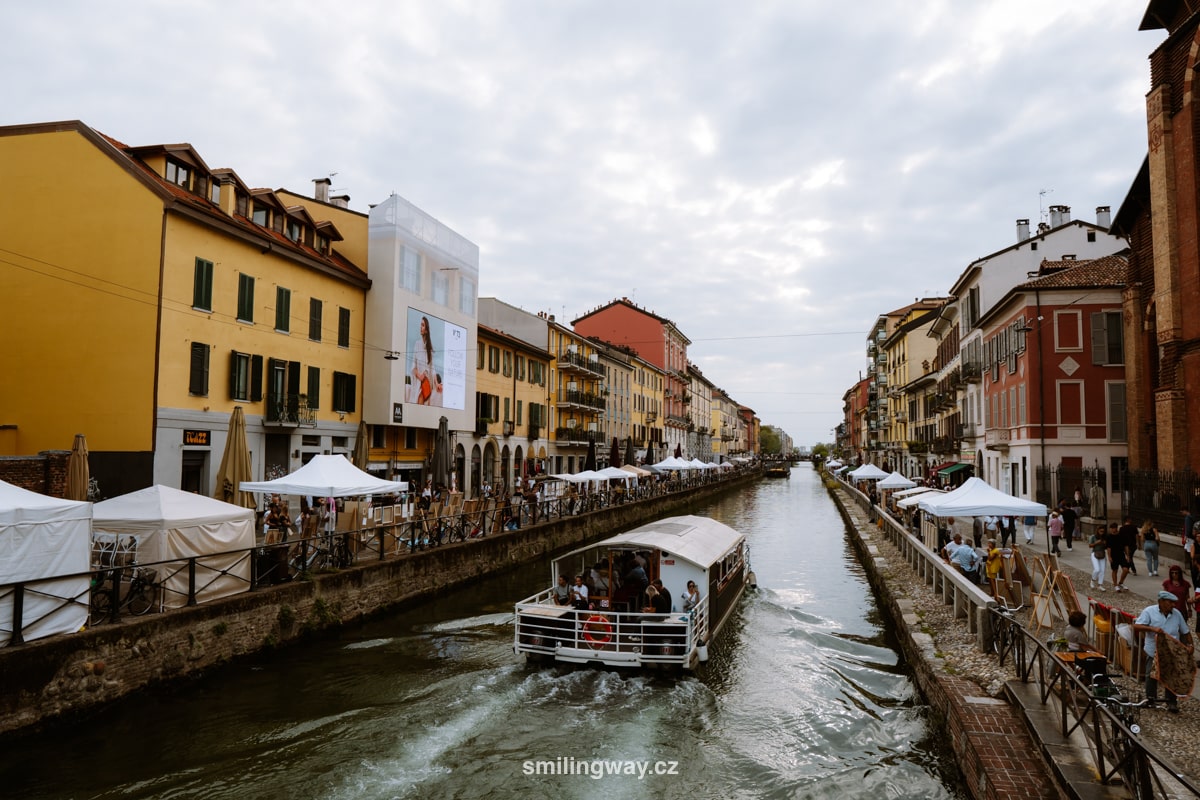
Especially the Navigli Grande canal should not be missed. It’s a lively area with cafes and restaurants where you can just stroll or take a boat ride and see Milan from a different angle.
For more tips on Milan, see the separate article on what to see in Milan. To help you plan your trip to Milan, we’ve created an itinerary for 3 days in Milan, including a map. Do you have less time? Check out the itinerary for Milan in 2 days or the itinerary for 1 day in Milan.
Bergamo – an overlooked gem just outside Milan
In Bergamo you will find one of the airports for Milano. If you fly with the low-cost airline Ryanair, you will arrive in Bergamo.
Many tourists overlook Bergamo and head straight to Milan. That’s a huge shame.
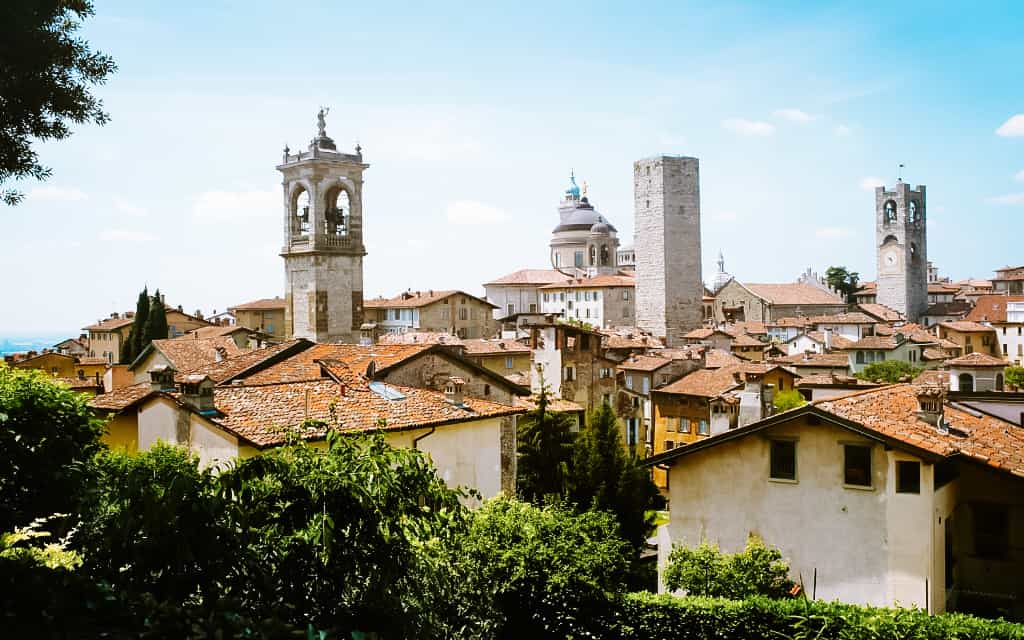
The old town of Bergamo, or Città Alta, is beautiful and completely different from Milan. UNESCO thinks so, too, and has inscribed part of it on the list.
It is literally a pleasure to walk in the local streets. You’ll discover beautiful corners, enjoy the views and the great atmosphere, and admire the Basilica of Santa Maria Maggiore (and the cathedral and the beautiful chapel next door), which is hidden behind the Piazza Vecchia.
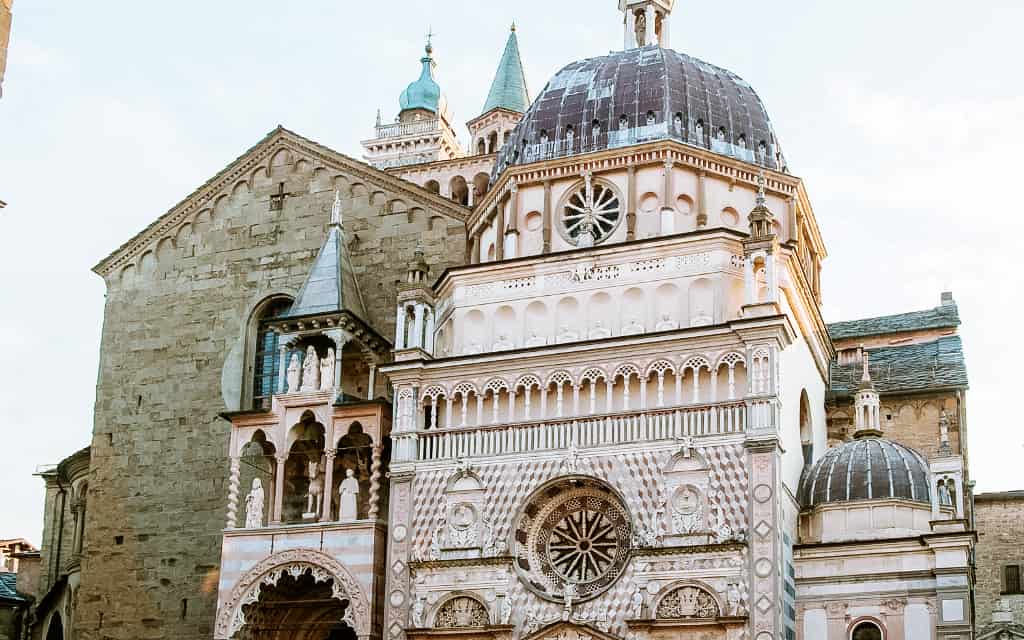
Read more about Bergamo in a separate article.
Mantova – the hidden pearl of Lombardy
Mantova is a historic city that is quite overlooked thanks to nearby Verona. Even Shakespeare mentions Mantua in Romeo and Juliet when he tells how Romeo fled to Mantua to escape the Capulets’ vengeance.
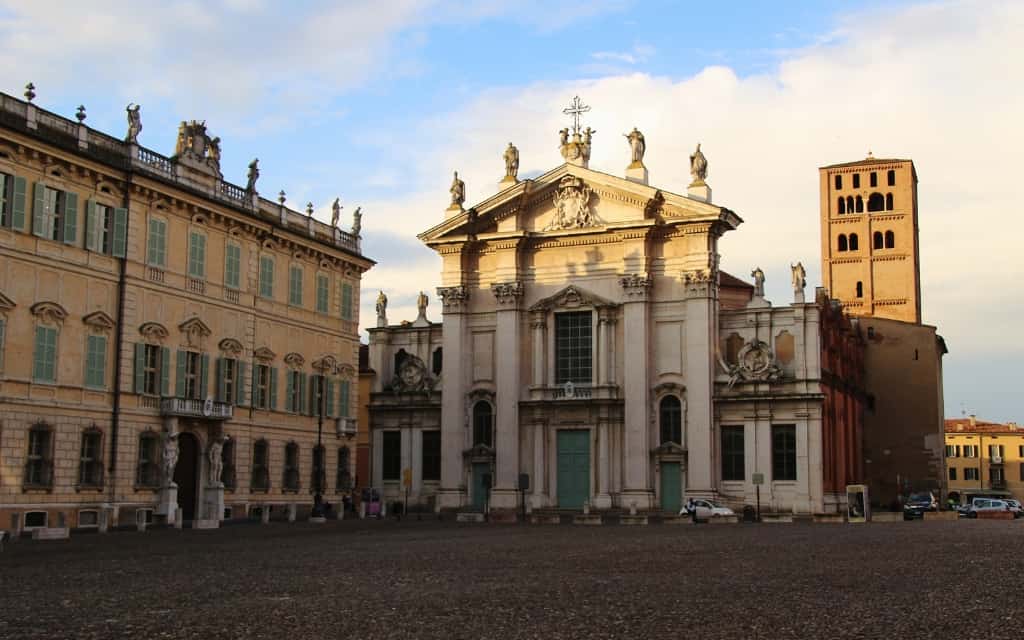
Mantova is the jewel and hidden pearl of Lombardy. The city is full of artistic and architectural monuments – for example, the Palazzo Ducale (former residence of the Gonzaga family) with its great halls, which are decorated with Mantegna’s frescoes.
The Renaissance city is surrounded by 3 artificial lakes, which make the city a perfect backdrop. Mantua is nicknamed “the sleeping beauty”. Almost nothing has changed since the Middle Ages and the town has managed to preserve its historical character. That is why it is on the UNESCO list.
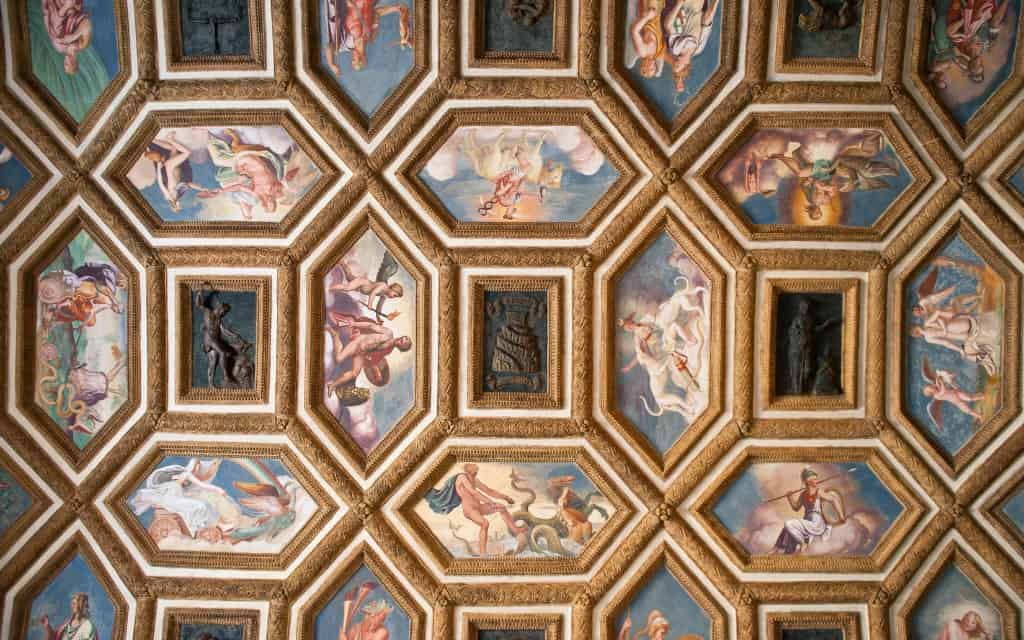
Stroll through the historic part of the city between Piazza Montegna, past the Basilica di Sant’Andrea to Piazza Sordello with the imposing Duomo di Mantua and Palazzo Ducale. Another wonderful place is the Mannerist palace Palazzo Te.
Pavia – home of the Carthusian monks
Pavia is a beautiful, historic town situated on the Tocino River. Don’t miss Piazza della Vittoria, the Cathedral or Ponte Coperto Bridge. You can wander the streets and discover the local churches.
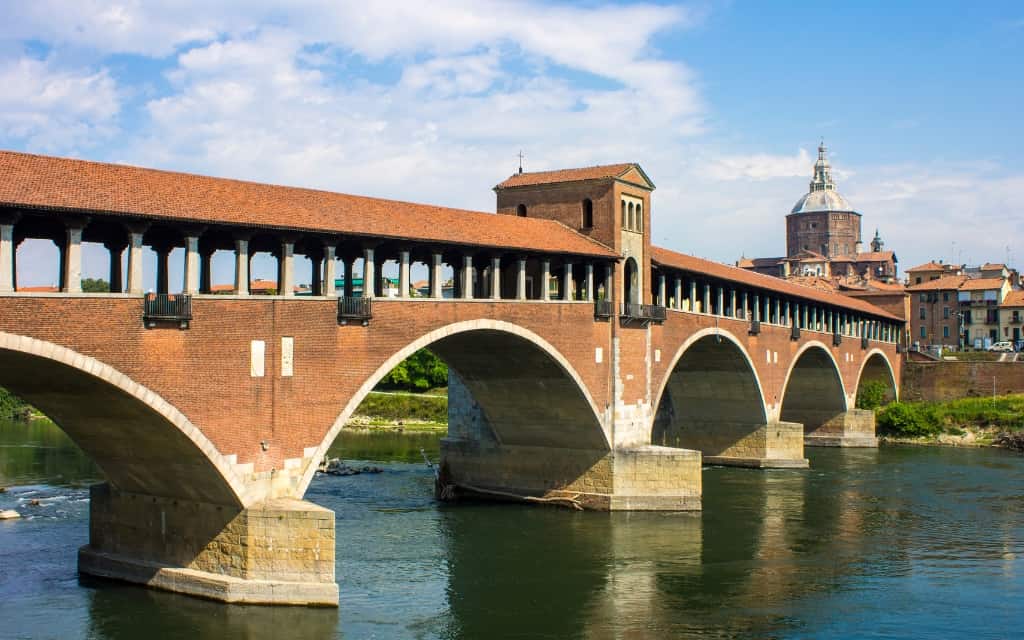
The main landmark of the town is one of the most important religious monuments in Lombardy – the monastery complex of Cartouza Pavia. Inside, it is decorated with extensive frescoes, marble columns and the original terracotta floor. It is a place full of spirituality that will draw you back to the time of the Carthusian monks.
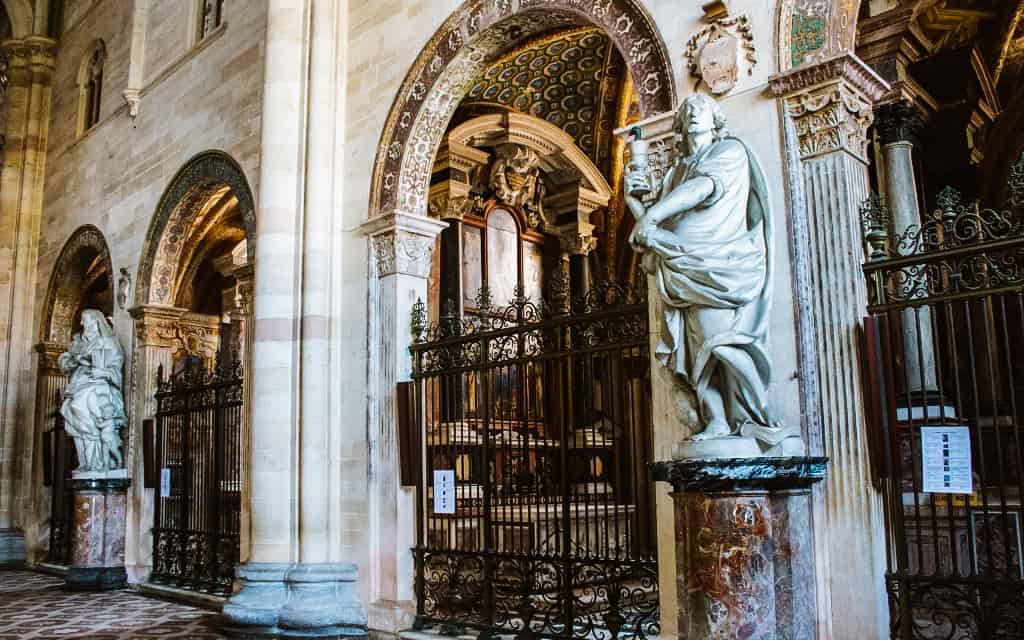
Cremona – the world city of violins and candied fruit with mustard
Cremona is a town in the south of Lombardy, located on the border with Emilia-Romagna. You may have heard of it. Cremona is probably the most famous area in the world for violin making. Find out more at the local violin museum. The modern prototype of the violin was invented here and the Stradivari violin comes from here.
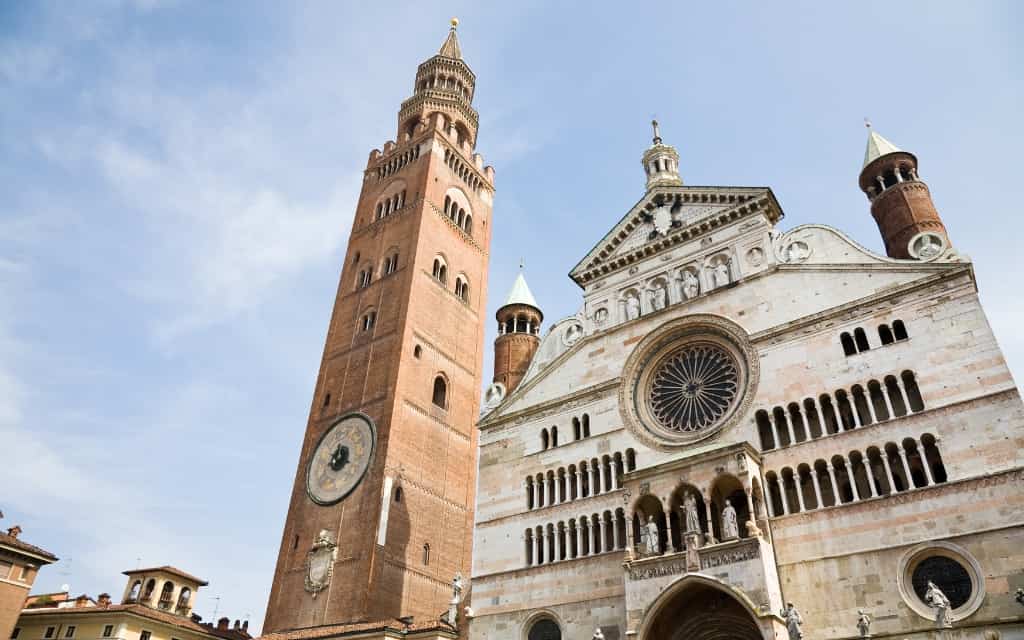
Cremona also impresses with its beautiful architecture, which is strongly influenced by the Romanesque style. The magnificent Cathedral of the Assumption has a tower over 110 metres high, the Torrazzo di Cremona, which is the third tallest brick building in the world.
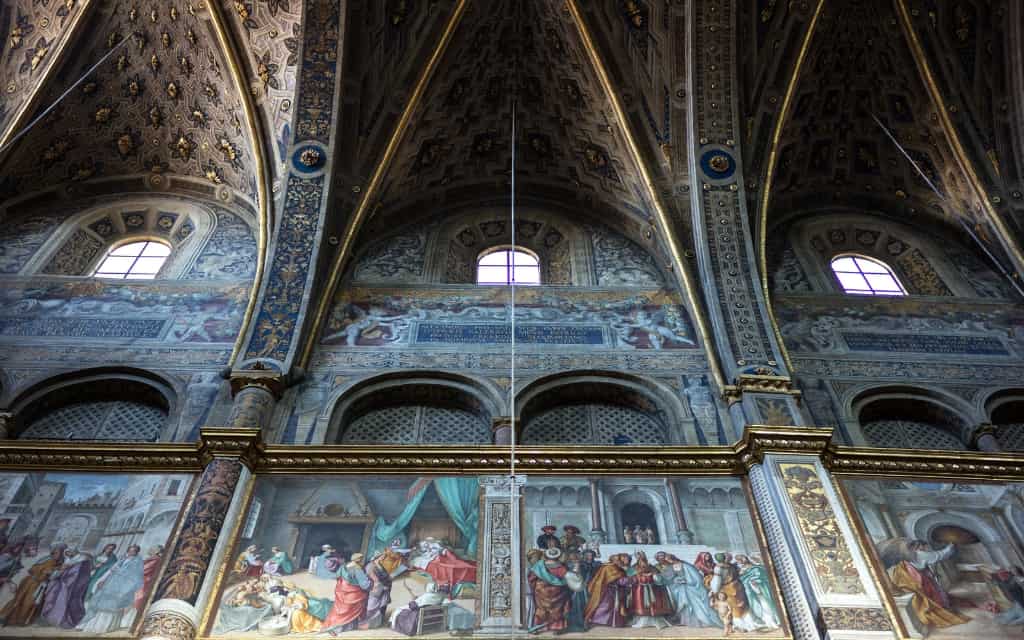
One last interesting fact: Cremona is also famous for its candied fruit coated in mustard. Don’t let the name put you off. The mustard adds just a subtle tangy touch to the syrup-coated fruit. It’s really yummy.
Brescia
Brescia is a town to the west of Lago di Garda that looks like another Lombard town – a vast square with a dominant cathedral.
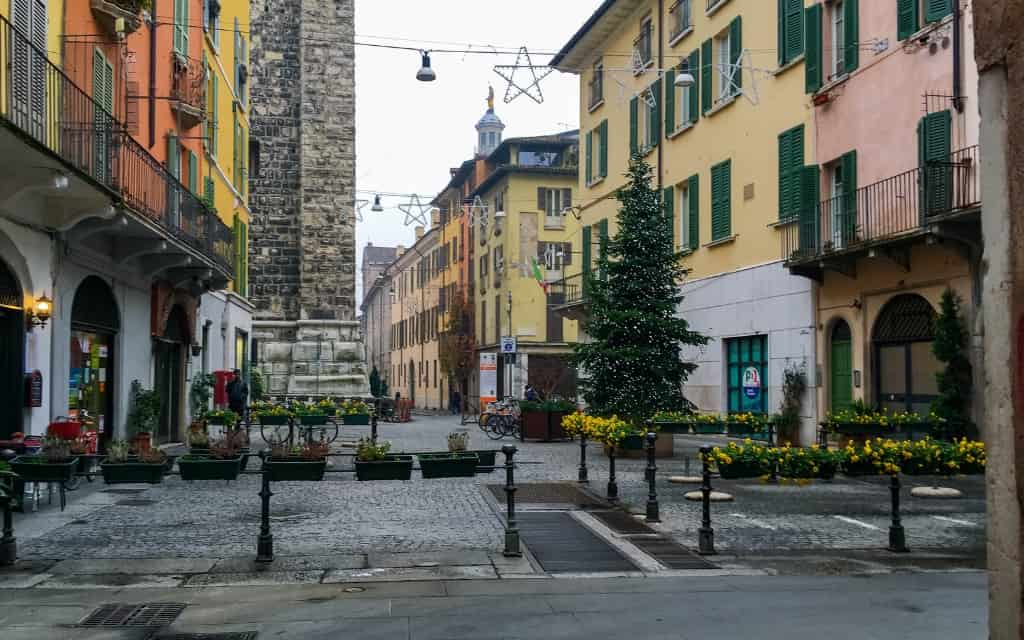
Worth seeing are the former monastery of San Saltvatore Santa Giulia and the Teatro Bibiena.
And if you can, visit Brescia in February, when the famous Festival of Lights takes place.
Things to do in Lombardy: THE MOST BEAUTIFUL PLACES AND NATURE
Lago di Garda – the largest lake in Lombardy
Lago di Garda is Italy’s largest lake. It is so large that it falls into 3 regions. Lombardy includes the western part of the region.
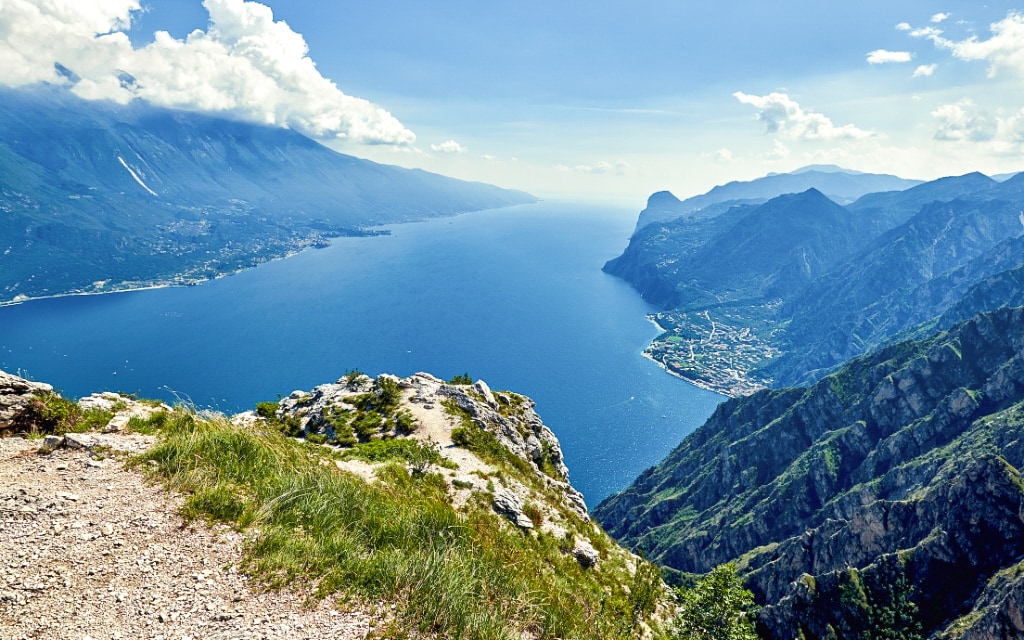
The lake has clear water with beaches that are contrasted by wild mountains interspersed with hundreds of kilometres of hiking trails. There are so many great things to do around the lake – swimming, water sports, walking around the lake or in the colourful towns, hiking in the mountains or soaking up history from the preserved ruins and castles.
The most famous lakeside town is Sirmione in the south, dominated by the medieval Scaliger Castle and fortress. Part of the castle is submerged in water, giving the impression that the ruins of the castle come directly out of the turquoise water.
Take a walk in Sirmione to the tip of the peninsula, where you’ll soak up history from the archaeological, Roman ruins. Sirmione is one of those places that is better to visit in the low season due to the number of tourists.
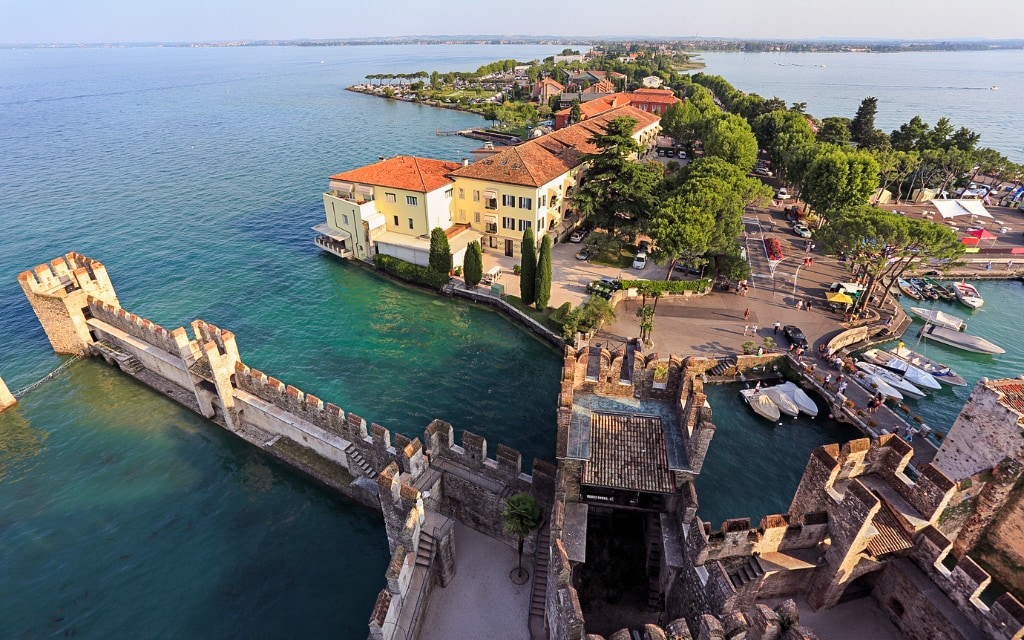
Check out more beautiful towns, attractions and trails around Lago di Garda in a separate article with tips on what to visit near Lago di Garda.
Lago d´Iseo – the lake with the largest inhabited, lake island in Europe
Lago d’Iseo is the fourth largest lake in Lombardy, located west of Lago di Garda. The main attraction is the village of Monte Isola and another village on the island itself in the middle of the lake. It is a place where you can experience perfect peace without cars.
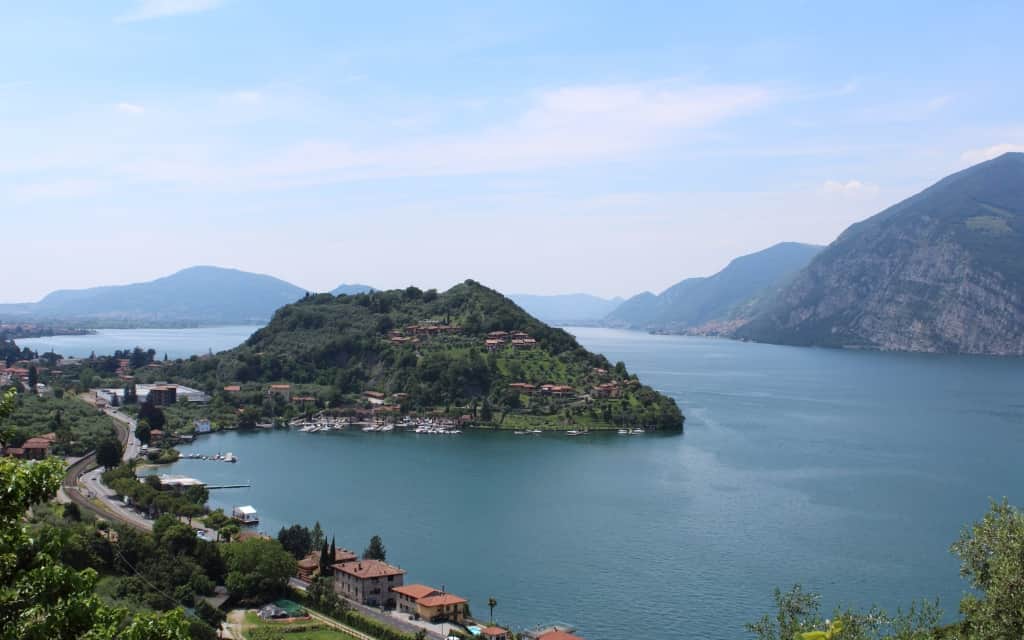
Monte Isola is called the pearl of Lake Iseo. In 2019, it won the title of the best tourist resort in Italy. See the villas from Roman times or the sanctuary of the Madonna Ceriola on the top of the mountain. The island is also the largest lake island in Europe.
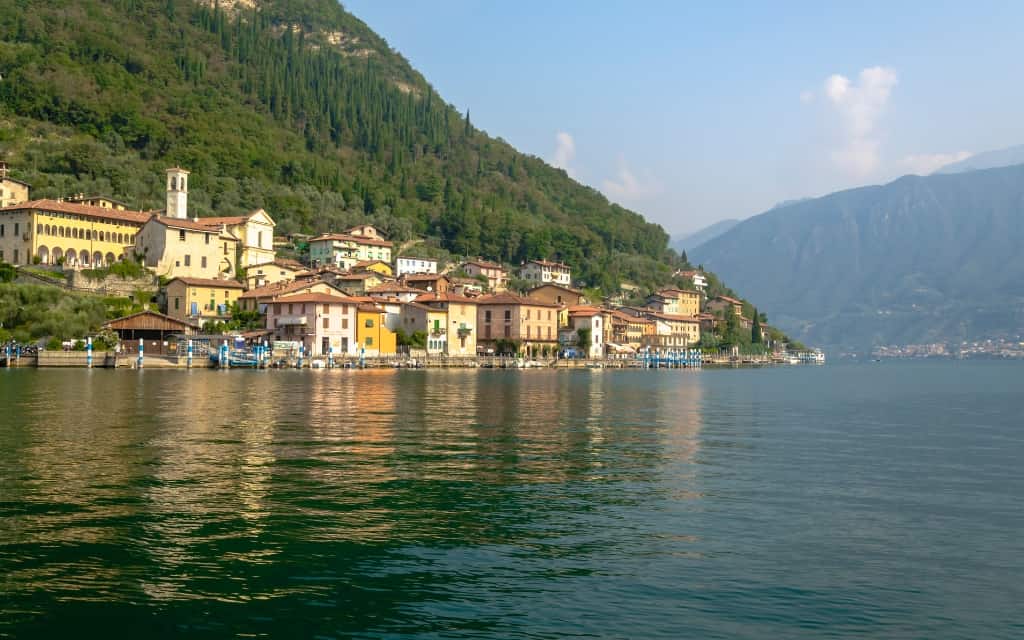
Lago di Como – home of George Clooney’s villa
Lago di Como is a popular lake on the edge of the Alps, its shape resembling an inverted Y. The lake is home to many opulent villas, including George Clooney’s villa. In the heart of the area lies the pearl of Lago di Como, the town of Bellagio.
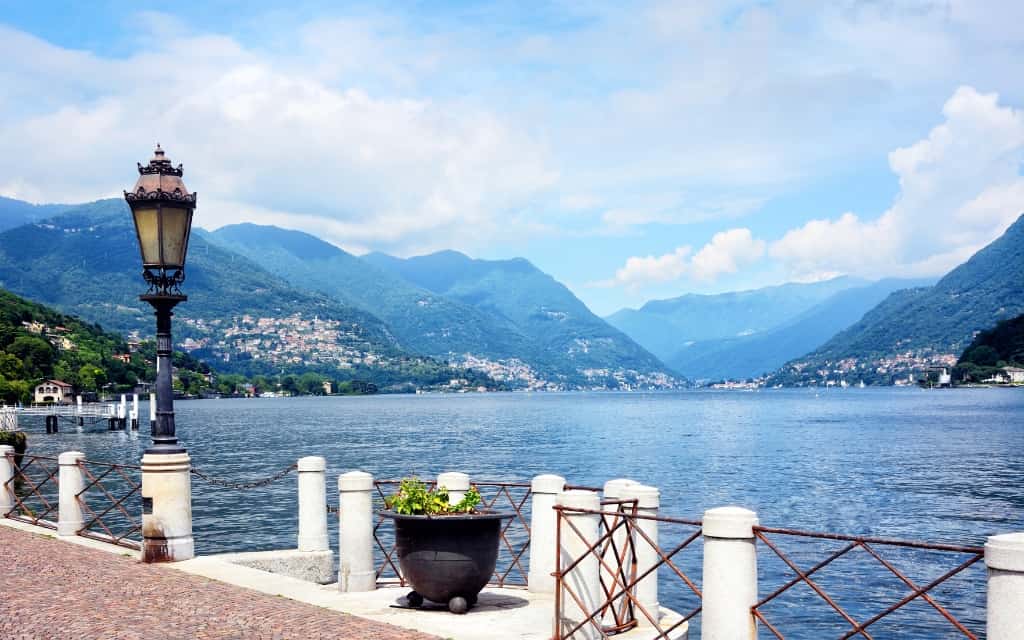
Bellagio is beautiful, but I would personally recommend the town with Roman roots, which is right across the street – Varenna. The atmosphere here is quieter and the whole town is charming.

For more tips on Lago di Como, see the separate article: Lago di Como.
Lago di Maggiore with the Borromean Islands
Lago di Maggiore is another beautiful lake, surrounded by mountains, which can be found northwest of Milan.
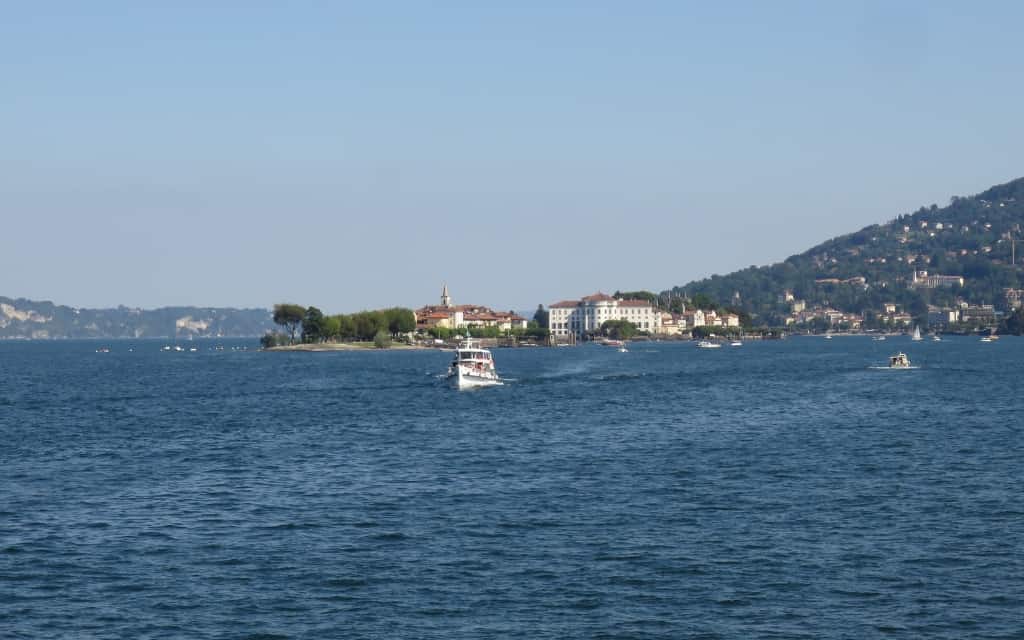
Visit the Borromean Islands, which consist of 3 islands – Isola Bella, Isola Madre and Isola dei Pescatori.
A garden with rare exotic plants is the famous island of Isola Bella. In the foreground, the island is dominated by an ancient Baroque palace, where works of art, tapestries, statues and mosaic caves are hidden.
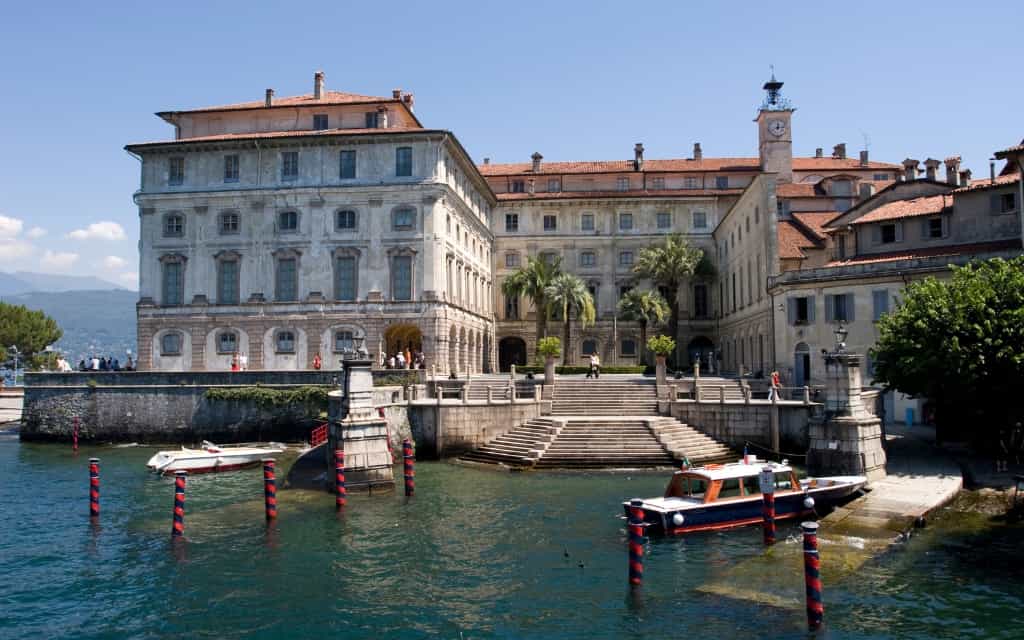
Madre Island is the largest of the Borromean Islands, where you will find a botanical park in the English style. The plants were brought here from distant landscapes and acclimatized to local conditions.
Isola dei Pescatori is the only permanently inhabited island with a population of 50 people. It’s a small fishing island. You can tell by the houses – they have large balconies just for drying the fish they catch.
The village consists of narrow, winding streets that lead to a promenade with many restaurants overlooking the lake.
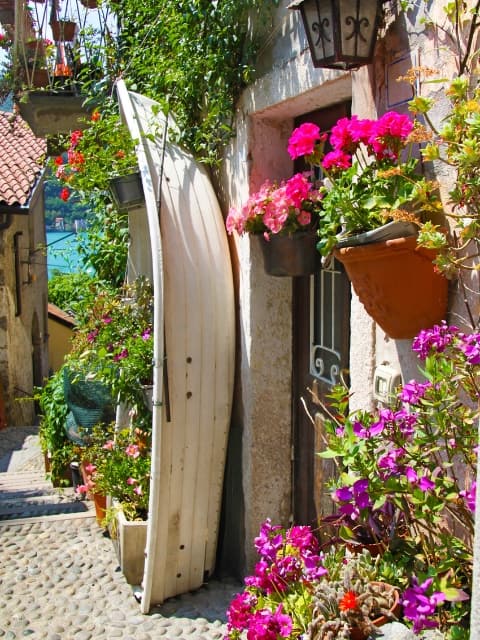
Val Camonica – 1st UNESCO sites in Italy
Val Camonica is a narrow valley carved around the Oglio River, stretching from Ponte di Legno in the north to Lago d’Iseo in the south. Today the valley is called Valle dei Segni.
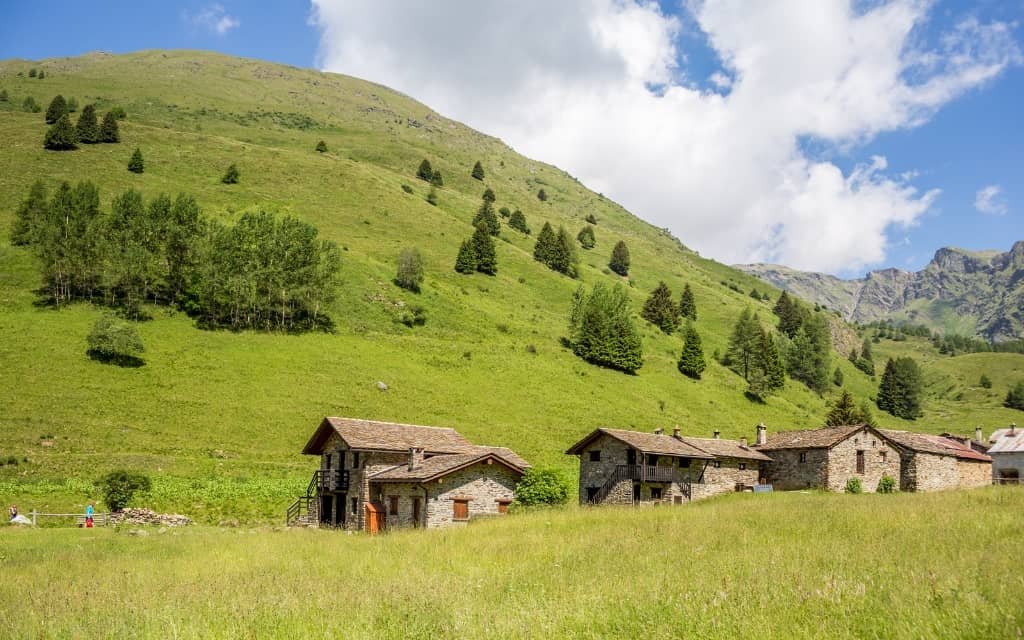
But it’s not just any valley. Here you will find one of the richest collections of petroglyphs in the world – 200,000 – 300,000 carved paintings dating back up to 10,000 years, many of which are very legible even today.
It is the first Italian site to be inscribed on the UNESCO list due to its unique value.
The best area for discovering petroglyphs is around the town of Capo di Ponte and between Darfo and Edolo. The ticket gives you access to 5 archaeological parks. The best is the Parco Nazionale delle Incisioni Rupestri di Naquane in Capo di Ponte. Mondays are usually closed.
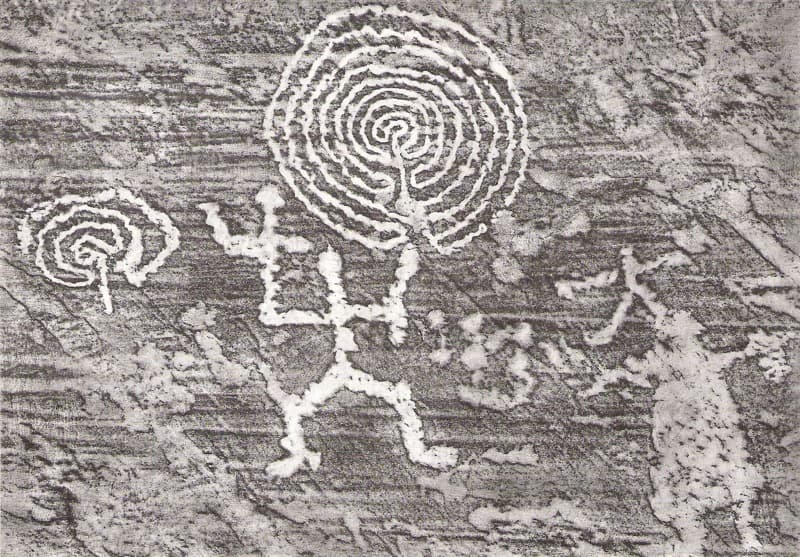
A short drive from Capo di Ponte is the mountain village of Pescarzo, which is the perfect base for exploring the whole of Val Camonica. Several hiking trails lead from here.
The village is a medieval maze with an unmistakable atmosphere. Here, polenta is made from corn, which is the most common carbohydrate along with rice in Lombardy. Everywhere you will see corn hanging from balconies, where it dries and is then crushed into polenta.
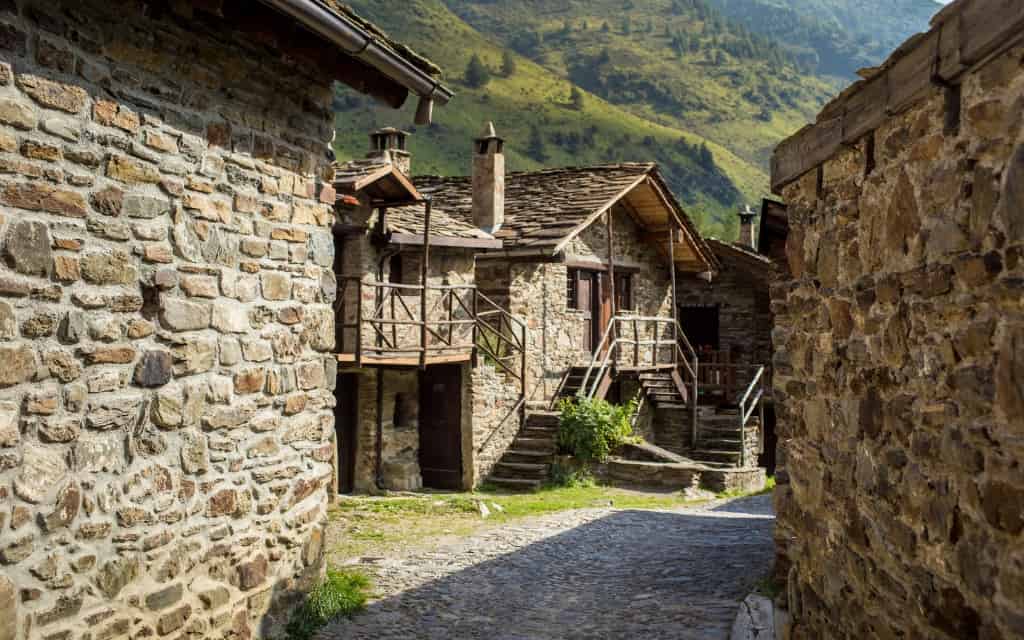
And speaking of beautiful villages, the village of Bienno in the valley is one of the most beautiful villages in Italy.
The nature of Val Camonica is so valuable and unique that it is listed as a UNESCO Biosphere Reserve.
Read: The most beautiful places to visit in Northern Italy.
Franciacorta – the vineyard with the highest production of sparkling wine
Franciacorta is a hilly area located between Brescia and the lago d’Iseo. The first traces of winemaking here date back to prehistoric times. It competes with Champagne in France, but is not as well known, so it is cheaper.
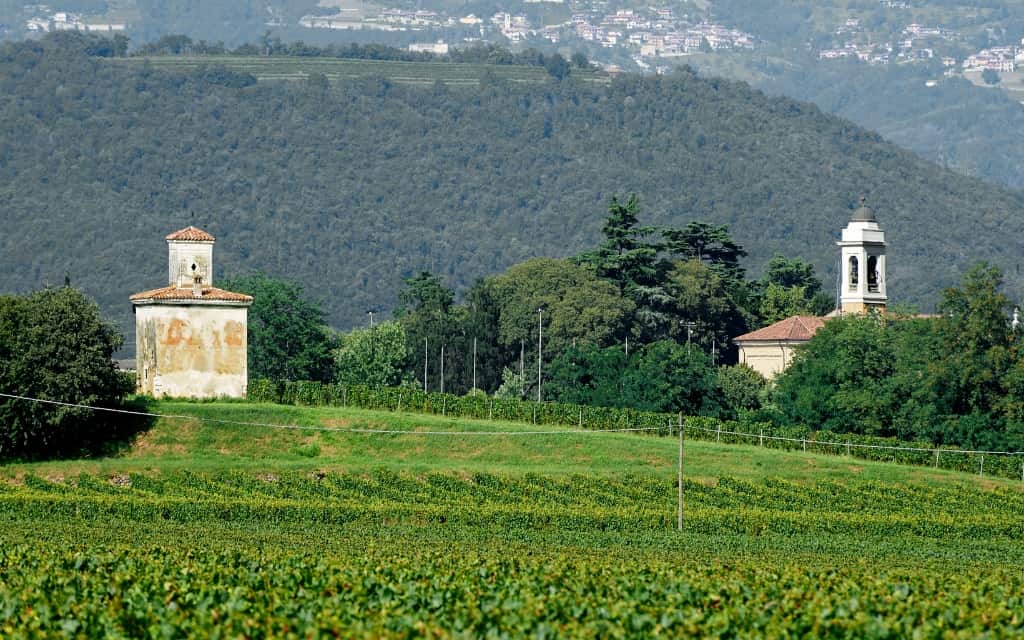
You can go to the largest wineries Ca´del Bosco and Berluchi or choose one of the smaller producers.
The area is also famous for its Haute cuisine, so if you really want to enjoy a great meal with some great sparkling wine, head to the Franciacorta area.
Lomellina region – rice fields
Anyone who thought that in the whole of Italy only pasta was leading the plate will be surprised. In Lombardy, rice is the main dish. This is mainly thanks to the rice fields that stretch around the towns of Vivegno, Lomella and Mortera in the Po Valley.
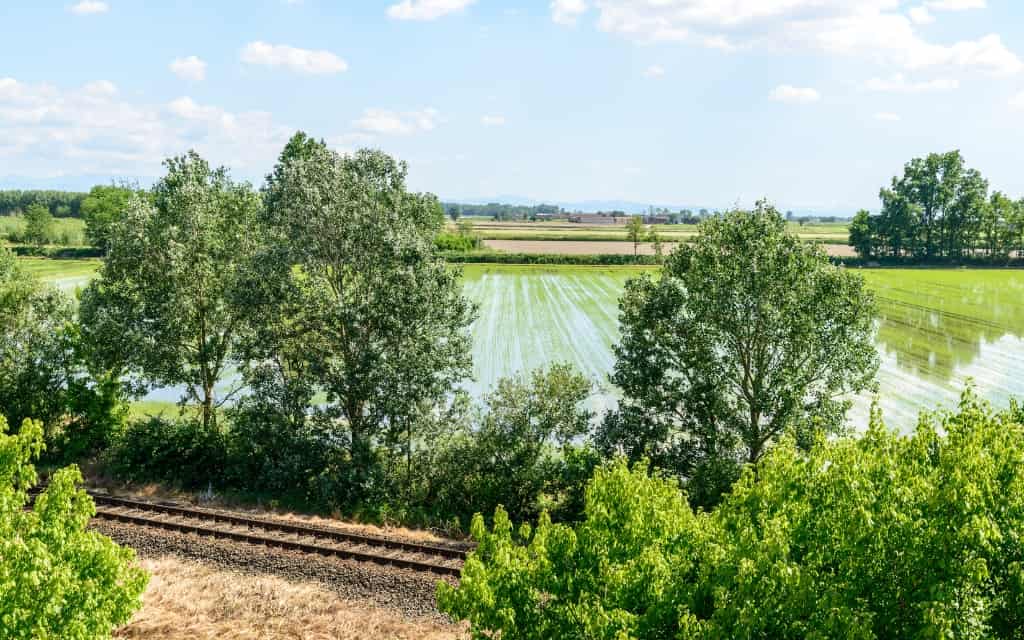
This area is also known as the Holland of Lombardy. It is a vast plain of rice fields, interspersed with numerous watercourses.
Bernina Red Train to places you can’t normally go
The Bernina Red Train is the iconic red train you may have seen in one of the documentaries about the world’s tallest and most impressive railways. This route starts in Tirano, Italy and takes you all the way to St. Moritz, Switzerland.
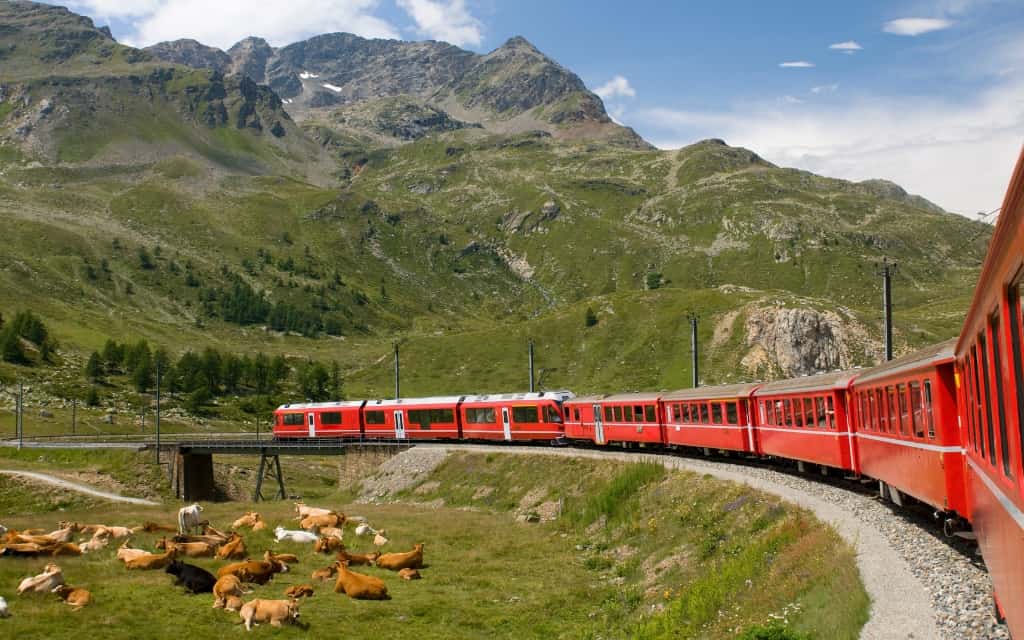
You can book your Bernina Express ticket online in advance at several times and return the same day. The other option is a day trip, where you also get transport from Milan included in the price.
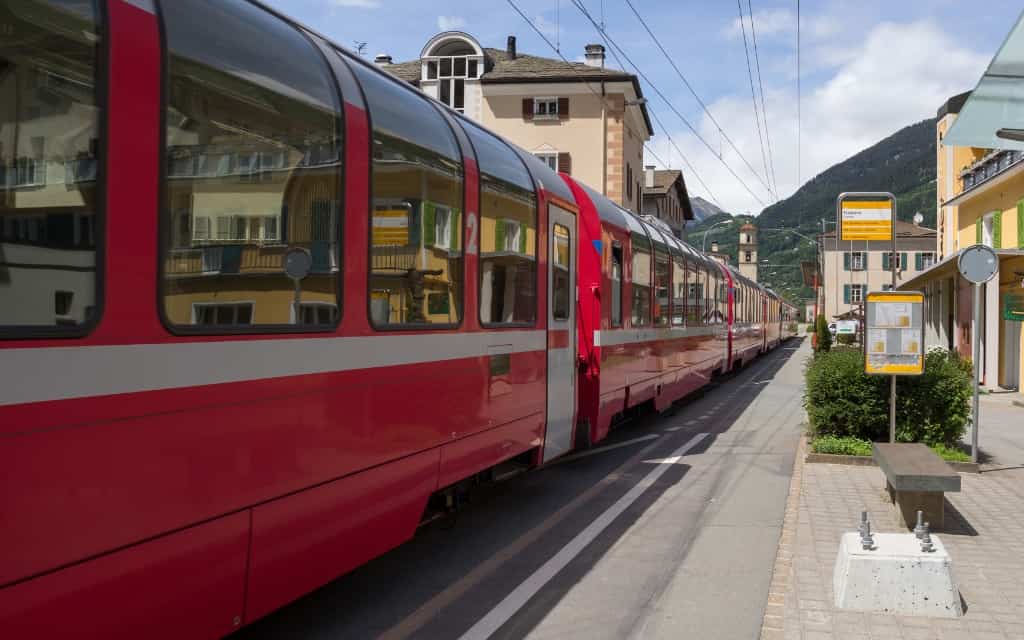
There are several stops along the way, so if you’re not planning to drive all the way to St. Moritz (known for its great beer and pastries), pick one of the stops along the way. The most impressive is the Morteratsch stop at the Swiss Morteratsch glacier.
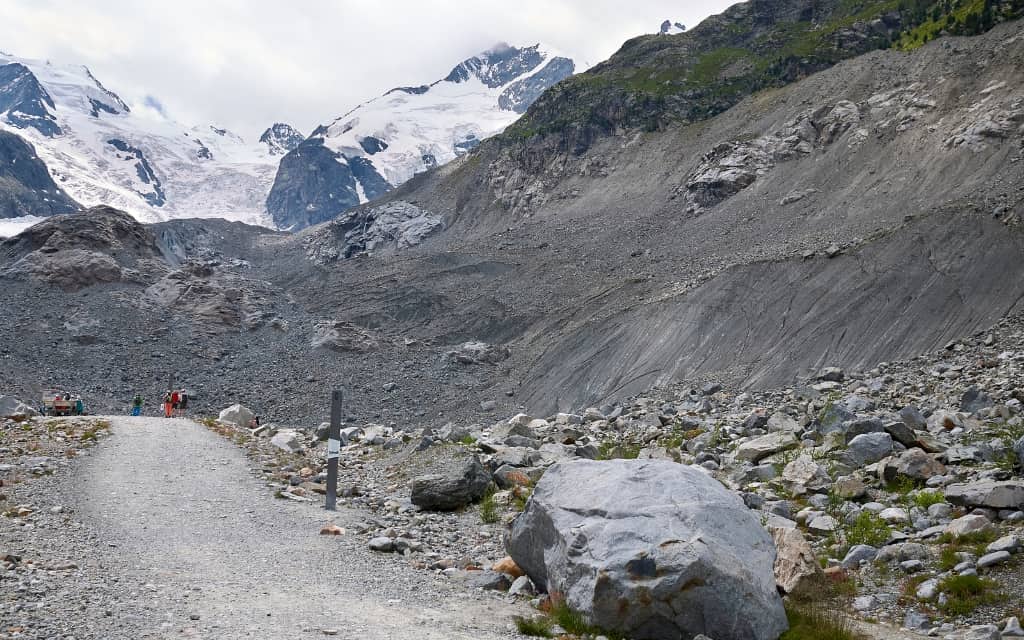
The journey to St. Moritz takes 2.5 hours. You can go in the morning, spend some time in the city and come back in the afternoon.
Parco Nazionale dello Stelvio – a wilderness among the Alpine peaks
It wouldn’t be a visit to Lombardy without a good hike in the Alps. And right in the Stelvio National Park, one of the largest in Europe. The Ortles Mountains lie within its territory.
If you want to see stunning panoramas, alpine valleys dotted with traditional huts, picturesque churches and diverse wildlife, make sure you stop here for a few days.
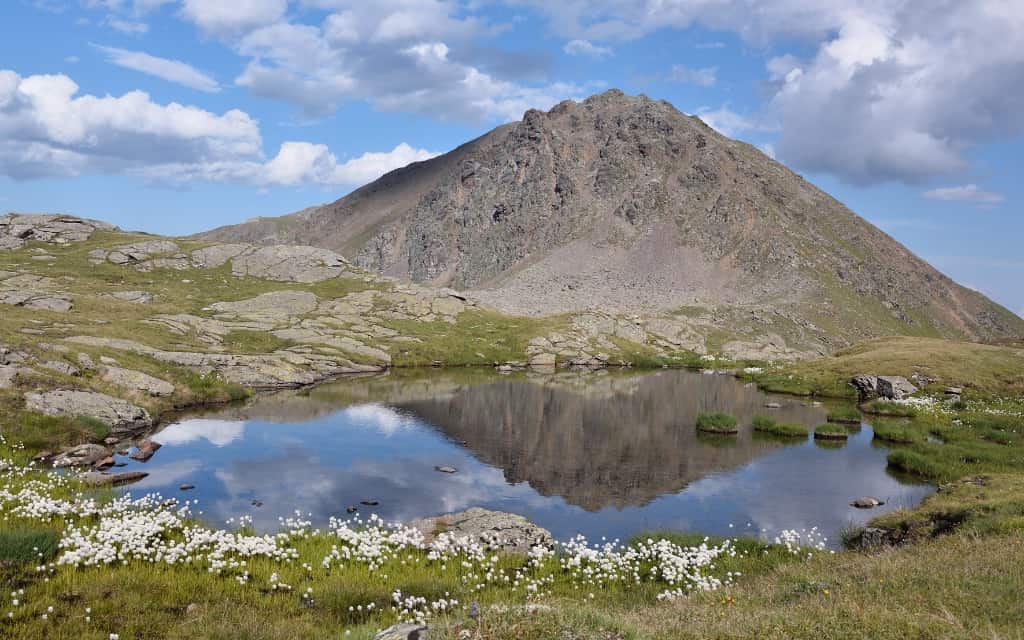
Hiking trails start at 650 m and climb up to 4000 m above sea level. This makes the local fauna, flora and nature very diverse. On the way you will meet deer, chamois, marmots or ibex.
You don’t have that much time? Drive through the national park via the Passo dello Stelvio (Stilfserjoch), the highest mountain pass in Italy and the second highest in the Alps. It’s free and the views are breathtaking even from the car.
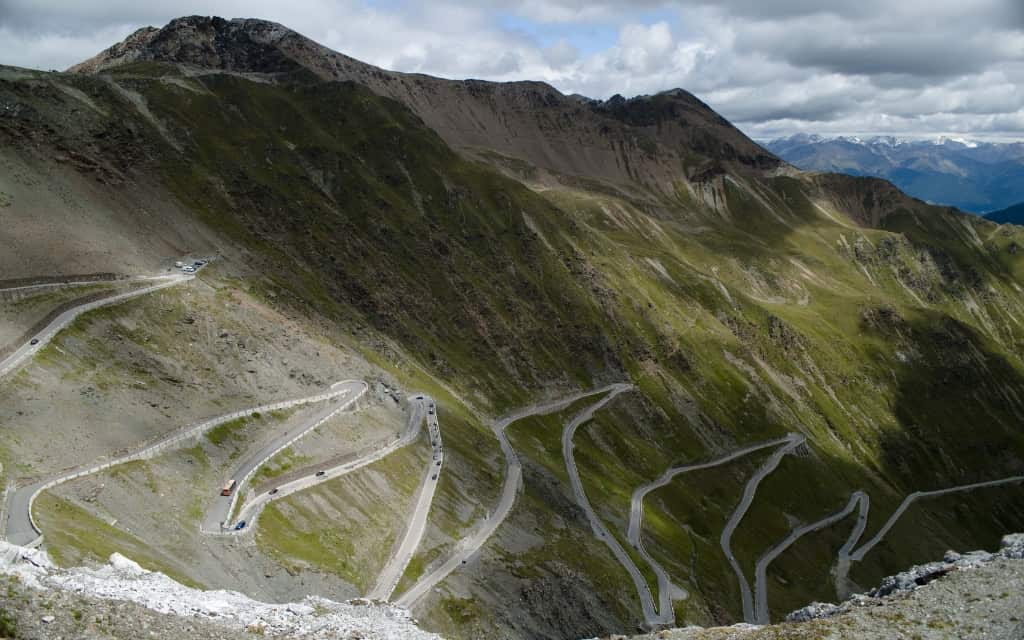
The Stelvio Pass lies between Bormio and Pratto allo Stelvio near Switzerland. It is 47.5 km long and the highest point is Passo dello Stelvio with an altitude of 2758 m.
The pass is closed in winter. For up-to-date information, please visit the official website.
Parco delle Orobie Bergamasche with ibex
The Orobie Nature Park lies 45 km north of Bergamo at the foot of the Alps. Over an area of 70,000 km2 you will find peaks exceeding 3,000 m and more than 1,000 trails of varying difficulty.
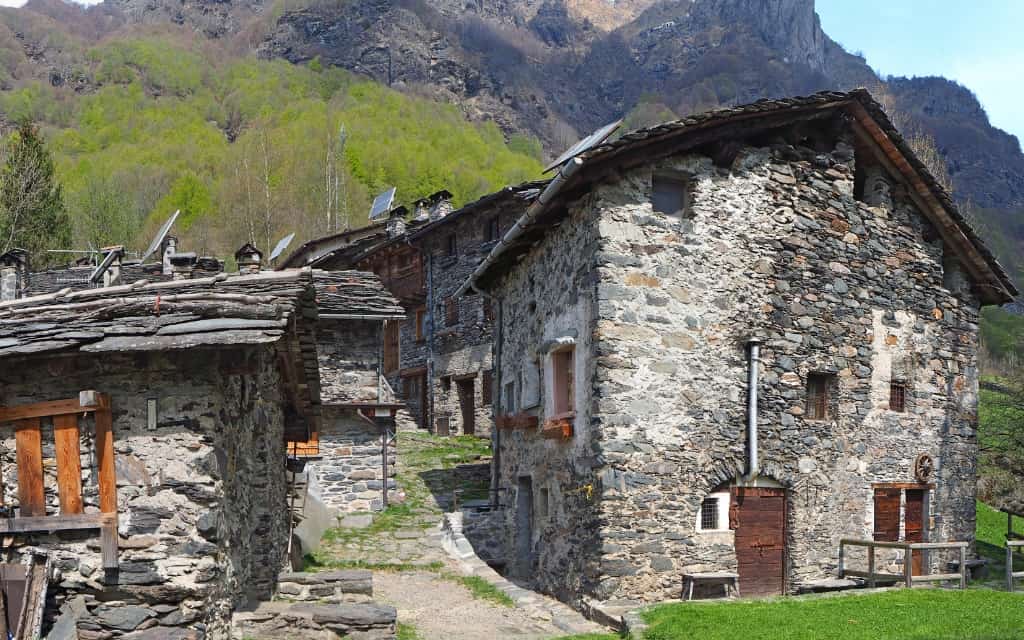
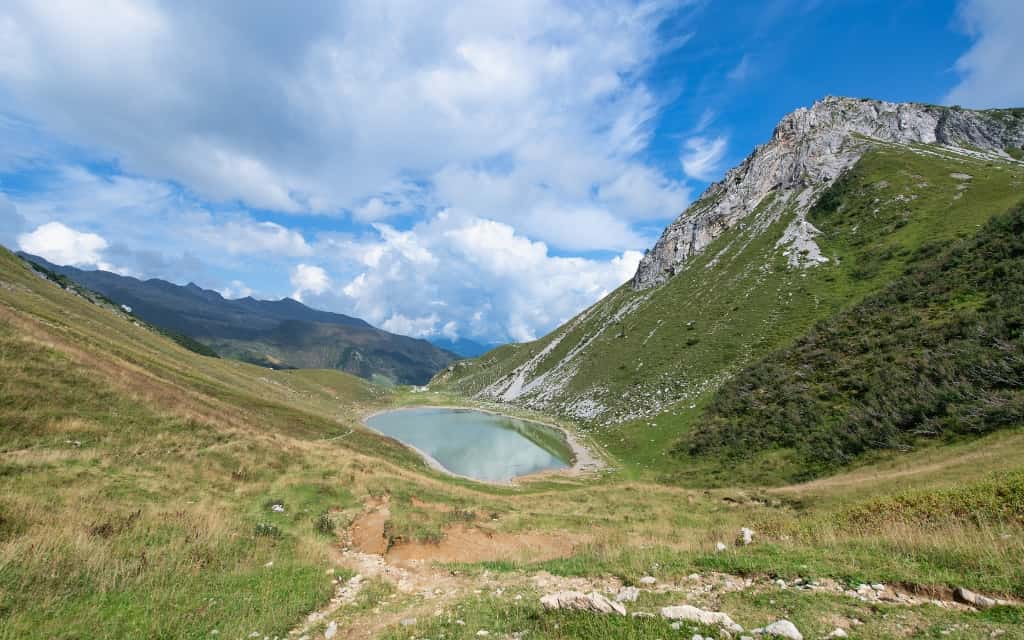
A well-known trail is the Orobie Trail (Sentiero delle Orobie) leading through the wild Orobie Prealps. It will take you past ibex and marmots, an eagle will fly over your head now and then, and there are several mountain huts along the way where you can spend the night or have something good to eat.
It is also a famous race for runners. The car park is just outside the village of Ardesio.
Lombardy hides many more wonderful places. This was just a small list of what awaits you here.
Where to stay in Lombardy?
The choice of accommodation depends on what you want to discover in Lombardy. Milan has a great central location and connections to many places:
- B&B Hotel Milano Ornato: Cheap, comfortable hotel a short walk from the tram station, with parking and 24/7 reception
- Hotel Ritter: A quiet hotel on the edge of the centre, with easy access to the Sforza Castle, the Duomo or the Brera district, 5 minutes by metro, 24/7 reception.
- B&B Hotel Milano San Siro: A pleasant hotel right next to the San Siro Stadium with parking and a few minutes from the metro station
- Hotel AMEDIA: New 4* hotel with good access to the centre and parking
Accommodation in Milan 😴
Lago di Garda offers a little bit of everything – beautiful nature and good access to the historic cities in the area (Verona, Venice, Padua).
Accommodation Lago di Garda 😴
Lombardy transport
Lombardy is very accessible by plane and car. It has direct air links to many major European cities, good road conditions and a dense network of train and bus services.
Travelling by car to Lombardy
A car is the ideal way to explore the whole of Lombardy and the surrounding area of Milan.
If you are planning to rent a car in Lombardy, the best experience we have with Rentalcars.com which has the widest range at good prices. Insurance and free cancellation is a matter of course.
Directions by car to Lombardy – fees
Fees vary depending on exactly where you are travelling from. If you go via Innsbruck, Austria, you will incur the following charges along the way:
- A motorway vignette for Austria for €11.50 for 10 days (motorbikes €4.60).
- Payment for crossing the Brenner Pass between Innsbruck and the Austrian-Italian border 11 €
- The toll in Italy is about 8-9 € per 100 km. You can pay the toll in cash or by card. Each payment gateway has a symbol at the top showing how you can pay.
The Brenner Pass vignette and payment for Austria can be purchased online in one place.
If you are driving from Vienna, you do not pass through the Brenner Pass. On the other hand, you will pay more in tolls. You can calculate the toll here.
Charges when travelling through Switzerland: Tje Swiss vignette for CHF 40. It is more expensive because only vignettes valid for 1 year are sold.
Petrol and diesel prices vary from country to country. For current fuel prices, please follow this link.
Follow this link for up-to-date information on traffic in Italy (tolls, closures, etc.). Google maps will also provide you with sufficient information.
What are the speed limits on the roads in Lombardy?
Unless otherwise stated, the following applies: maximum speed 110-130 km/h on Italian motorways, 70 km/h on two-lane roads outside the city and 50 km/h in the village. Outside the city you must have your lights on.
Lombardy by air
Lombardy has very good air connections with many major European cities. If you’re travelling on a budget, you can get tickets really cheap.
The main airports for Lombardy include:
- Bergamo Orio Al Serio Airport (BGY) – Bergamo Airport is located on the outskirts of Bergamo, northeast of Milan
- Malpensa Airport (MXP) – Malpensa Airport is located northwest of Milan.
- Linate Airport (LIN) – this airport is located on the outskirts of Milan
How to get from Bergamo Orio Al Serio Airport?
From Bergamo Airport you can go to Bergamo or Milan. Bergamo is worth a visit in itself, but you can also take a number of excursions from here(Lago di Como, Brescia and more).
The centre of Bergamo is easily accessible. At the exit of the terminal you will see information or a ticket machine. Buy your 1A Airport bus ticket here. This will take you to Bergamo Train Station.
From Bergamo Orio Al Serio Airport you can get to Milan by regular bus for €10. I recommend buying your airport – Milan ticket online so you don’t have to find the ticket window at the airport.
Buses run more frequently according to the number of flights. If you can’t fit in one, you can take the next one. Get off at Milano Centrale Central Station. From the same station you can then take a variety of excursions around Lombardy.
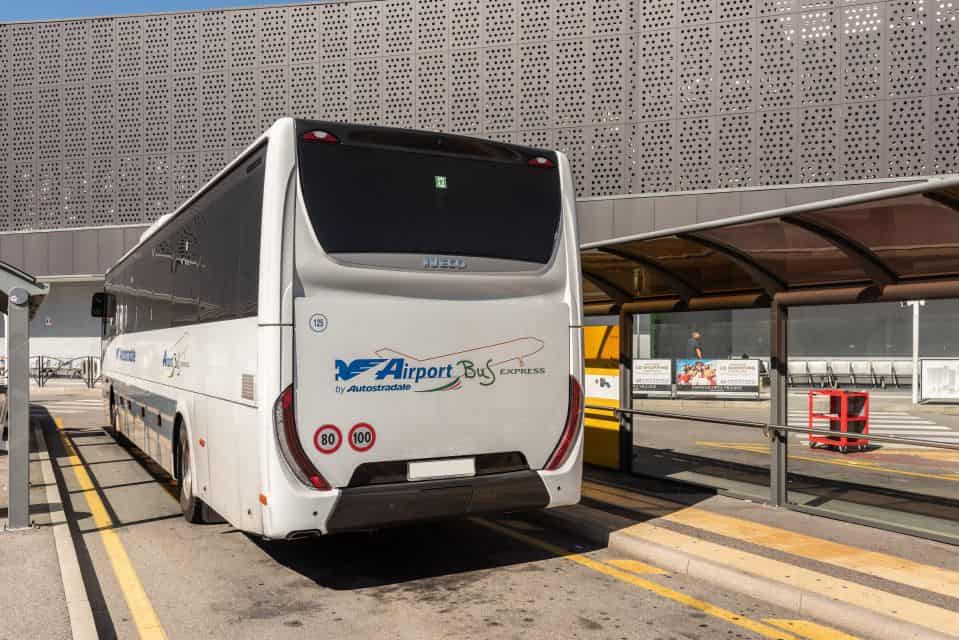
How to get from Malpensa Airport to Milan?
Malpensa Airport is the main airport for Milan. This gives you more options to get to the city centre. You can use direct buses for 10 €.
I recommend
order tickets in advance. You don’t have to look for anything on site, just scan the code and get on the bus at the exit. Just like at Bergamo Airport, you get off at Milano Centrale Station, where buses then leave back to the airport.
As with Bergamo Airport, you will get off at Milano Centrale Station, where buses then depart back to the airport.
The fastest way to get from Malpensa Airport to central Milan is by train, the Malpensa Express. Tickets cost 13 €. You have a choice of two lines – choose according to where your accommodation is located:
- Malpensa Airport to Centrale Station via Garibaldi Station – 54 minutes (a few minutes less at Garibaldi Station)
- Line from Malpensa Airport to Cadorna Station – 37 minutes
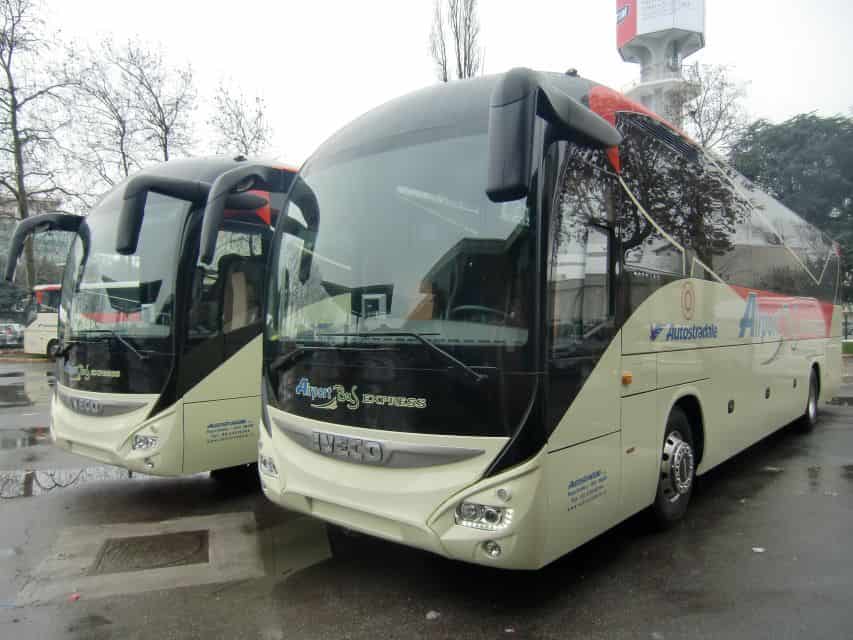
How to get from Linate Airport to Milan?
Linate Airport is the closest to Milan, so commuting distances are usually the shortest. At the airport, you can take the Airbus bus to Centrale Station. The journey takes about 25 minutes.
Another popular option is the local bus 73, which stops right outside the Duomo (1 hour journey).
Read our detailed guide to Milan (what to see, transport, accommodation, prices, food, etc.)
How to get around Lombardy?
If you plan to rent a car in Lombardy, you can pick it up at the airport. Rentalcars.com have partnered with local car rental companies, so you have a choice of locations to pick up your car.
Renting a car is very simple. You will fill in the necessary information and present your ID and driving licence upon collection. The price also includes insurance and free cancellation. You can pick up your car at the airport.
Lombardy has great train connections. Where trains can’t go, buses will. Look for train connections via the Italian railways Trenitalia or Google maps, which also work very well.
Food in Lombardy
As Lombardy is in or just below the Alps, the climate is cooler. The local cuisine is hearty and filling.
No tomatoes or basil. The main ingredients are meat, cheese, rice, butter and polenta. Freshwater fish (perch, tin, pike) also have a large presence in the menu.
Dairy cattle are raised on a large scale in the Po Valley. This makes Lombardy one of the most fertile areas for cheese and butter production in Italy. Gorgonzola and Grana Padano are also made here.
What food to try in Lombardy?
- Risotto or straight saffron risotto (Risotto alla Milanese)
- Bresaola – dried, salted beef of a beautiful dark red colour from the Valtellina valley in the Alps, aged for 2-3 months
- Veal schnitzel Milanese style – from veal cutlet, very similar to Austrian schnitzel
- Pasta stuffed with pumpkin (Tortelli di Zucca) – a speciality especially in Mantova
- Panettone – sweet bread with candied orange, lemon zest and raisins
- Torrone – nougat flavoured with roasted almonds, honey and vanilla
- Mostarda di Frutta – candied fruit coated in mustard, which makes it a great contrast to sugar syrup, an ideal accompaniment to cheese and cold cuts
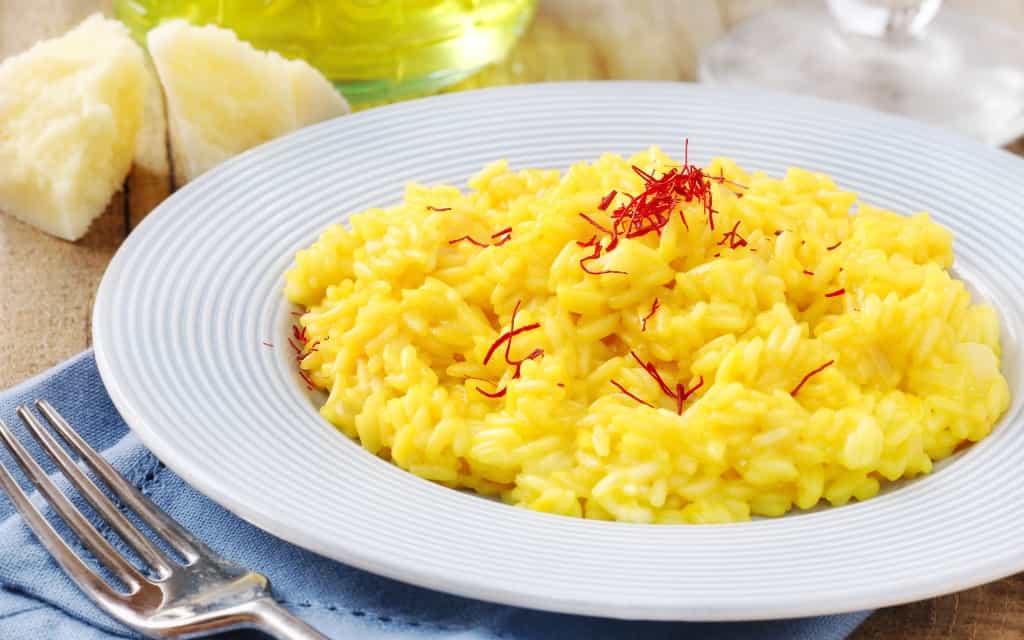
When to visit Lombardy?
Lombardy is so diverse that it has something for everyone all year round.
The climate in Lombardy is cooler and not as scorching as, for example, Tuscany or French Provence. Still, you can work up a good sweat in Milan during August (luckily, most of the accommodation in Milan has air conditioning).
In summer you can swim in the lakes(Lago di Como, Lago di Garda, Lago di Maggiore). Temperatures are pleasantly summery and, although these are alpine lakes, they are warm and great for water fun.
Summer and early autumn are ideal for hiking in the national parks or cycling among the vineyards of Franciacorta.
In winter, enjoy great skiing on the Alpine slopes.
At any time of the year, you can go to one of the cities(Milan, Bergamo, Matova, etc.) for culture and to admire the beautiful architecture.
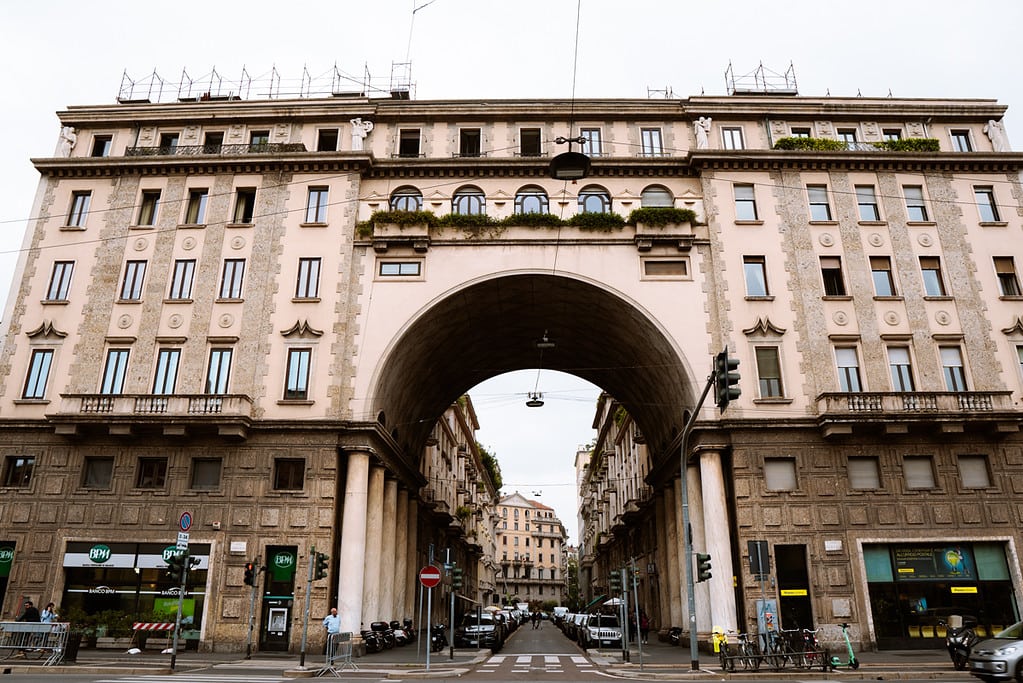
Prices in Lombardy
You’ll pay around €20 for a meal in a cheap restaurant and around €80 for a 3-course dinner for two. The prices of basic foodstuffs are as follows (shown for Milan, prices in other parts of Lombardy are usually slightly lower):
- Milk 1 l – 1,43 €
- White bread 500 g – 2,27 €
- Eggs 12 pcs – 3,53 €
- Cheese 1 kg – 13,82 €
- Chicken breast 1 kg – 10,30 €
- Bananas 1 kg – 1,88 €
- Water 1,5 l – 0,47 €
- Potatoes 1 kg – 1,44 €
Practical information before travelling to Lombardy
Currency: euro (EUR)
Payment: For small purchases and payments, it is smaller to have cash with you, but otherwise you will pay by card in most places. Take a look at what fees your bank charges and what exchange rates are in order not to overdo it. We can recommend the World card from mBank for us.
Electric socket: In Italy they use electrical sockets type C, F and L. Types C and F are compatible with most sockets in Europe and are widely used in northern Italy (including in hotels). L sockets are mainly found in older houses. If you are travelling from the UK or Ireland, you will need a socket reducer. In Italy, the electrical sockets used are types C, F and L. Types C and F are compatible with most sockets in Europe. Hotels and other tourist places have them too. Type L sockets are mainly found in older houses. It’s better to pack a reducer, but you can buy it in almost any store for a few tens of crowns if needed.
Language: The official language is Italian. In the tourist areas you can usually speak English well too.
Safety: Lombardy in Italy is a safe area. There is a risk of pickpocketing in the more touristy places, so make sure you keep a good eye on your belongings and hide them well.
The best booking resources for visiting Lombardy
Via Booking.com we search for all accommodation. It is the largest accommodation portal in the world and you will find everything from modern hotels, cosy guesthouses to seaside villas.
Get Your Guide is a huge booking system for buying tickets, guided tours and all sorts of activities. In one place you can read other travellers’ experiences and book tickets to the Vatican Museums, a cruise on the Danube or a desert safari in Dubai.
If you are planning to rent a car in Lombardy, the best experience we have with Rentalcars.com which has the widest range at good prices. Insurance and free cancellation is a matter of course.
Plan your trip quickly and easily. If you buy something through our links, we get a small commission. You pay nothing extra. Thank you!
These were our tips for what to visit in Lombardy. Do you have a question?ce We’ll be happy to answer it in the comments below. Have a safe journey!
More information about Italy
LOMBARDY: Milan is the capital of Lombardy, famous for its magnificent cathedral. To help you plan your trip to Milan, we’ve created an itinerary for 3 days in Milan, including a map. Do you have less time? Check out the itinerary for Milan in 2 days or the itinerary for 1 day in Milan.
Just outside Milan is Lago di Como, a beautiful alpine lake. Or check out our 15 tips on what to see in Bergamo.
Here are more than 30 tips on what to visit at Lago di Garda, including other useful information.
NORTHERN ITALY: Get inspired with this list for the most beautiful places to visit in Northern Italy, including a map.
ITALY: Get inspired by the most beautiful places in Italy.
ROME: Rome is one of the most popular cities in Europe. Here’s a list of the best things to see in Rome. Build your 3-day Rome itinerary and see how to save in Rome. Find out all about the Vatican Museums or the Colosseum.
VENICE: In the article What to visit in Venice we bring you tips on the most beautiful places and other useful tips.
TUSCANY: You can’t miss Florence on your visit to Tuscany. See the most beautiful places in Florence. Pisa is another wonderful city to see in Tuscany.
DOLOMITES: One of the most beautiful mountain ranges in the world can be found in northern Italy. What to see in the Dolomites is in a separate article. In the Dolomites guide we share useful tips on how to plan your trip to the Dolomites.
Read even more tips on travelling in Italy.
Summary: What to see and do in Lombardy
When you say Lombardy, most of us think of the magnificent Duomo in Milan, one of the most beautiful cathedrals in the world. And the view from the roof is definitely worth it. Or explore the medieval streets of Città Alta in Bergamo, the monastery complex in Pavia and the old town of Mantova. Lombardy is home to the beautiful alpine lakes of Lago di Como, Lago di Maggiore, Lago d’Iseo and Lago di Garda. Or visit Val Camonica, home to one of the world’s most extensive collections of petroglyphs (Italy’s first UNESCO World Heritage Site).
Lombardy has something for everyone. At any time during the year. Ski in the ski resorts, enjoy the breathtaking views of the Stelvio Pass, hike in the national parks, swim in the warm Alpine lakes or admire the beautiful architecture in Milan, Bergamo, Mantova and other cities in Lombardy.
The climate in Lombardy is slightly cooler than further south in Italy. Still, you can work up quite a sweat in Milan during August.
In summer you can swim in the lakes(Lago di Como, Lago di Garda, Lago di Maggiore). Temperatures are pleasantly summery and, although these are alpine lakes, they are warm and great for water fun.
Summer and early autumn are ideal for hiking in the national parks or cycling among the vineyards of Franciacorta. In winter, enjoy great skiing on the Alpine slopes.
